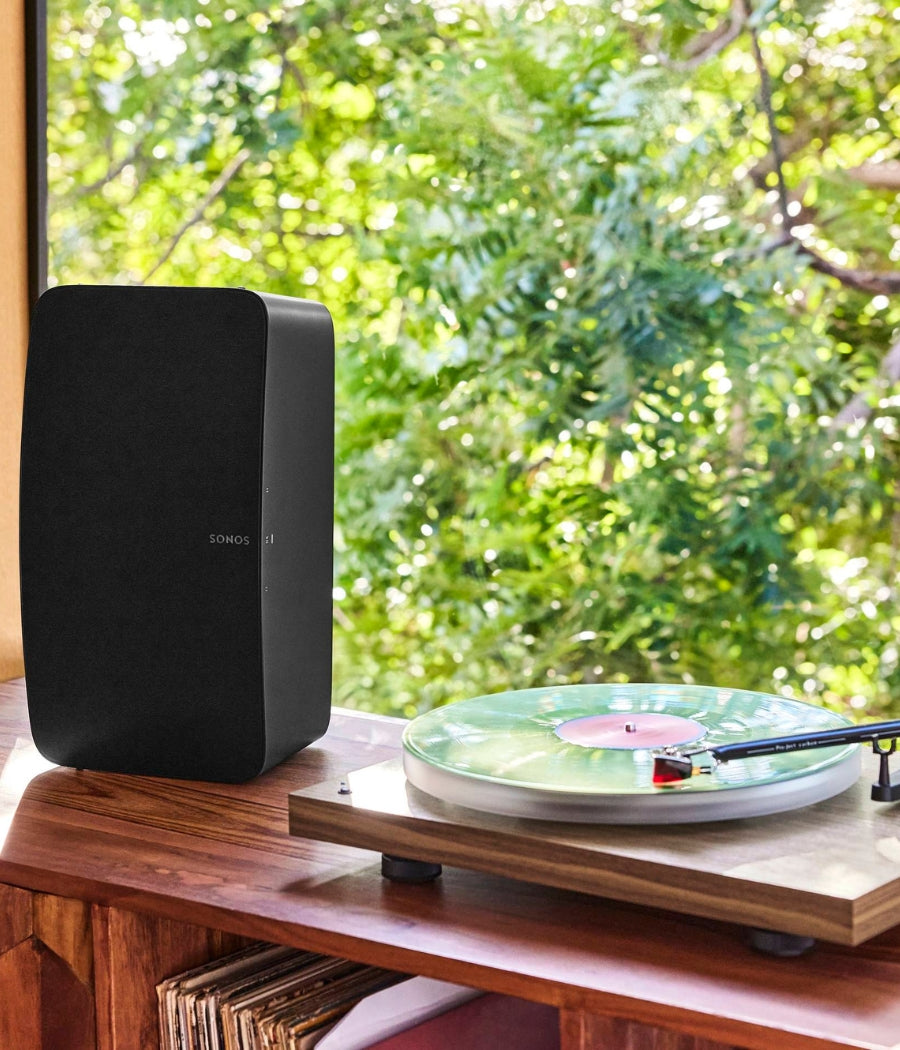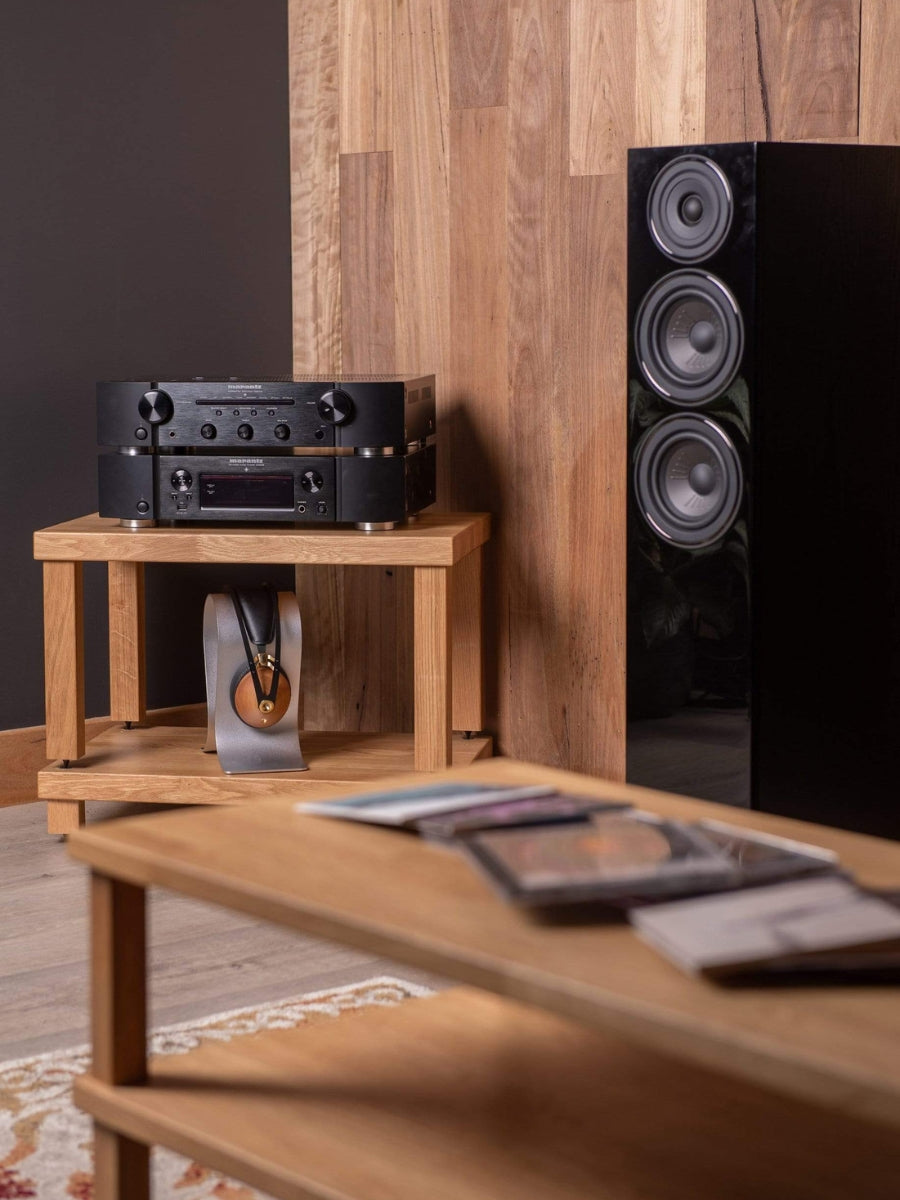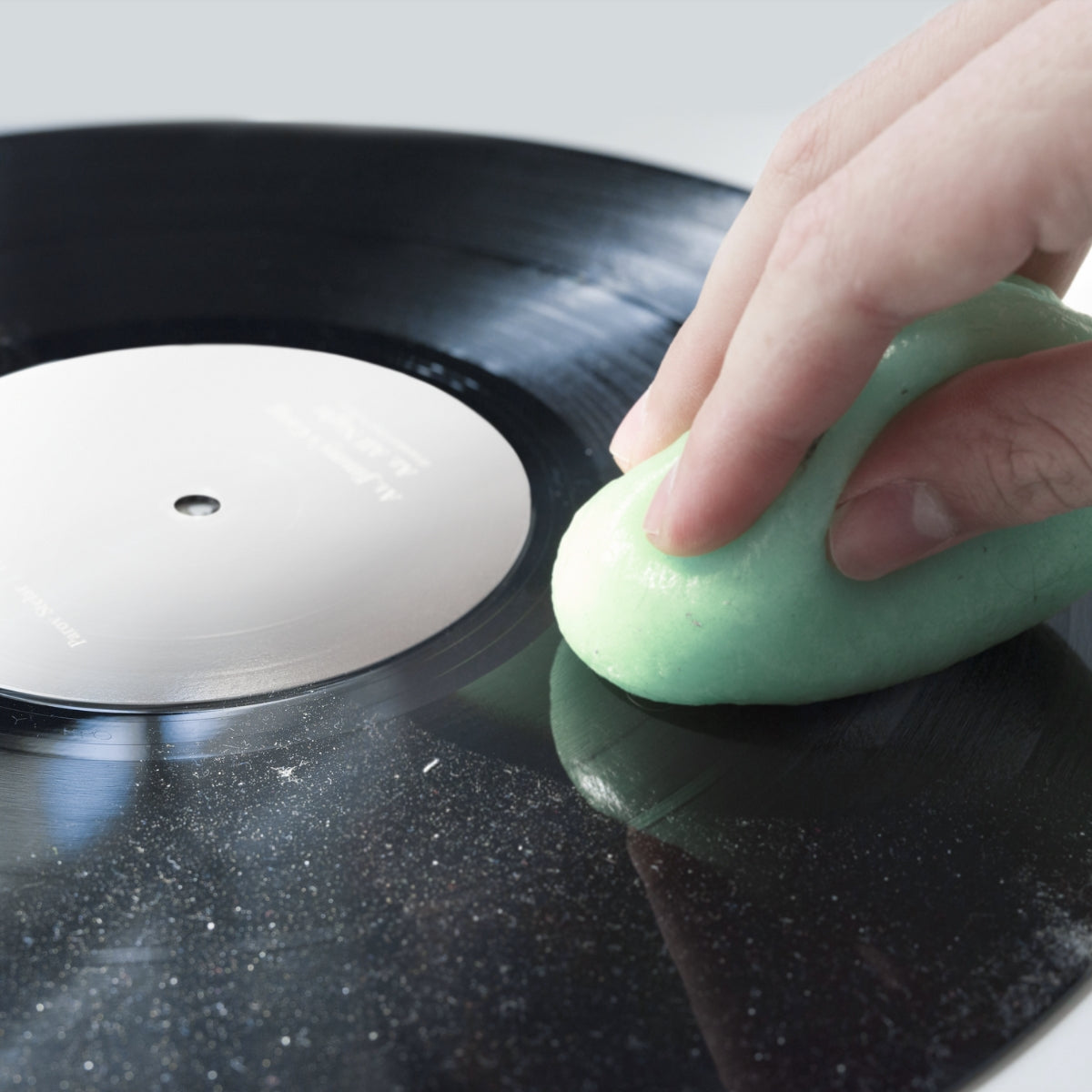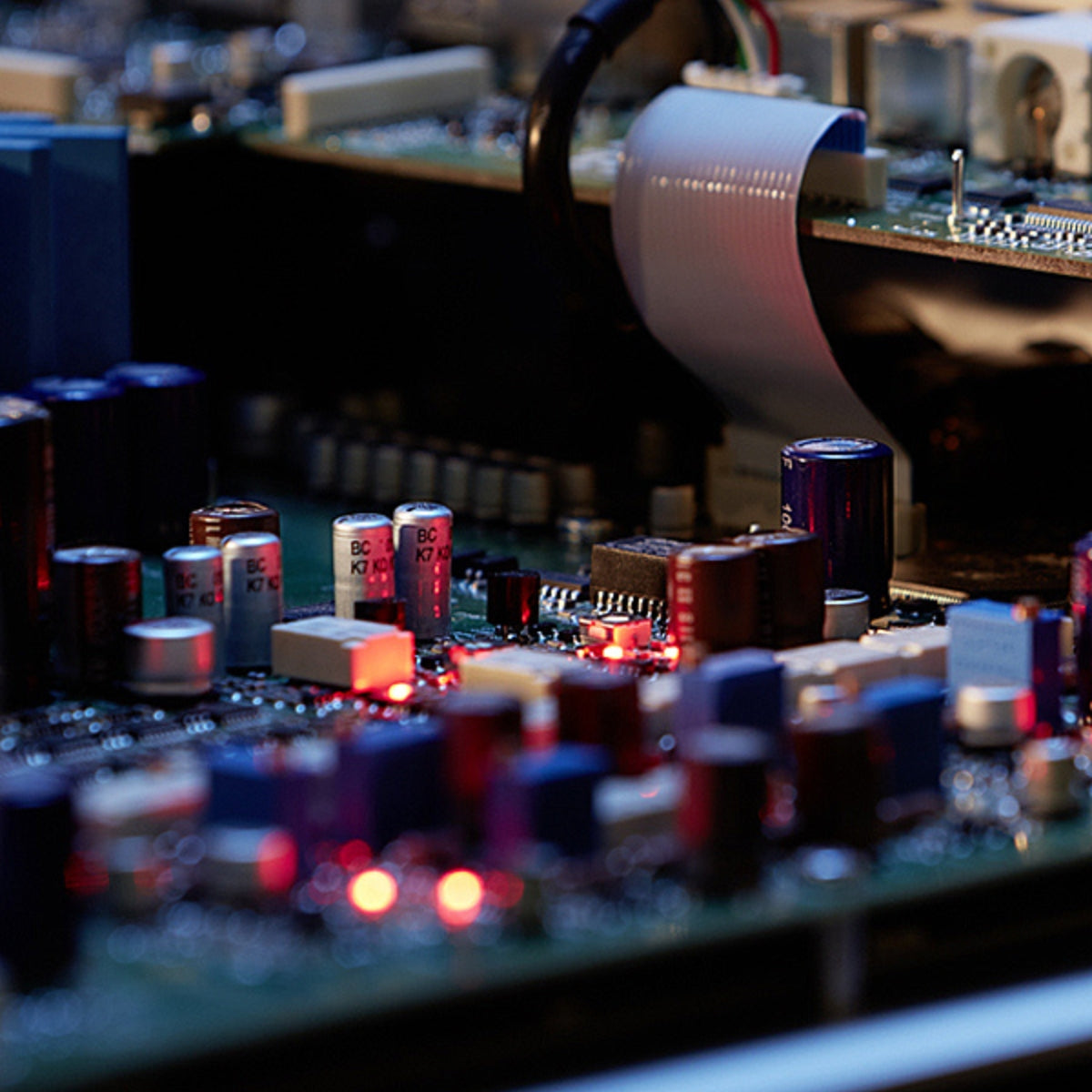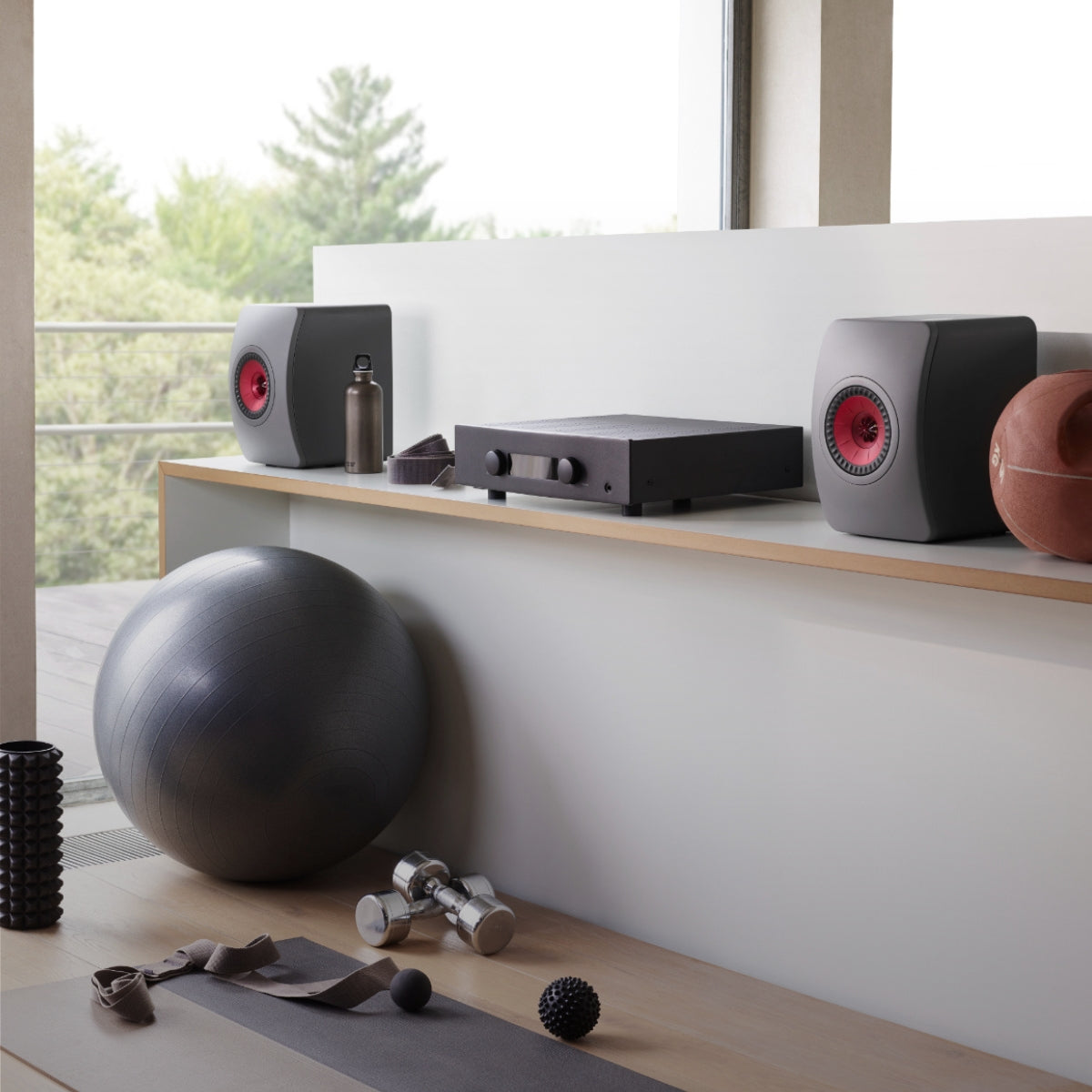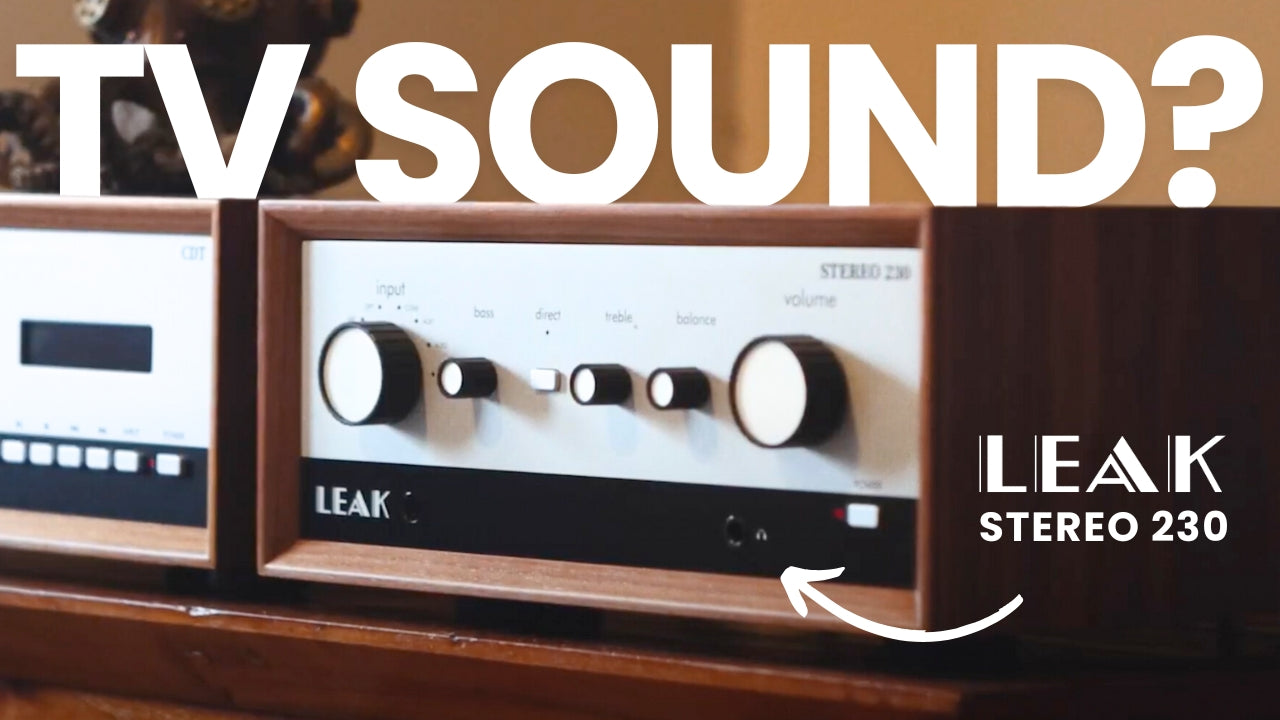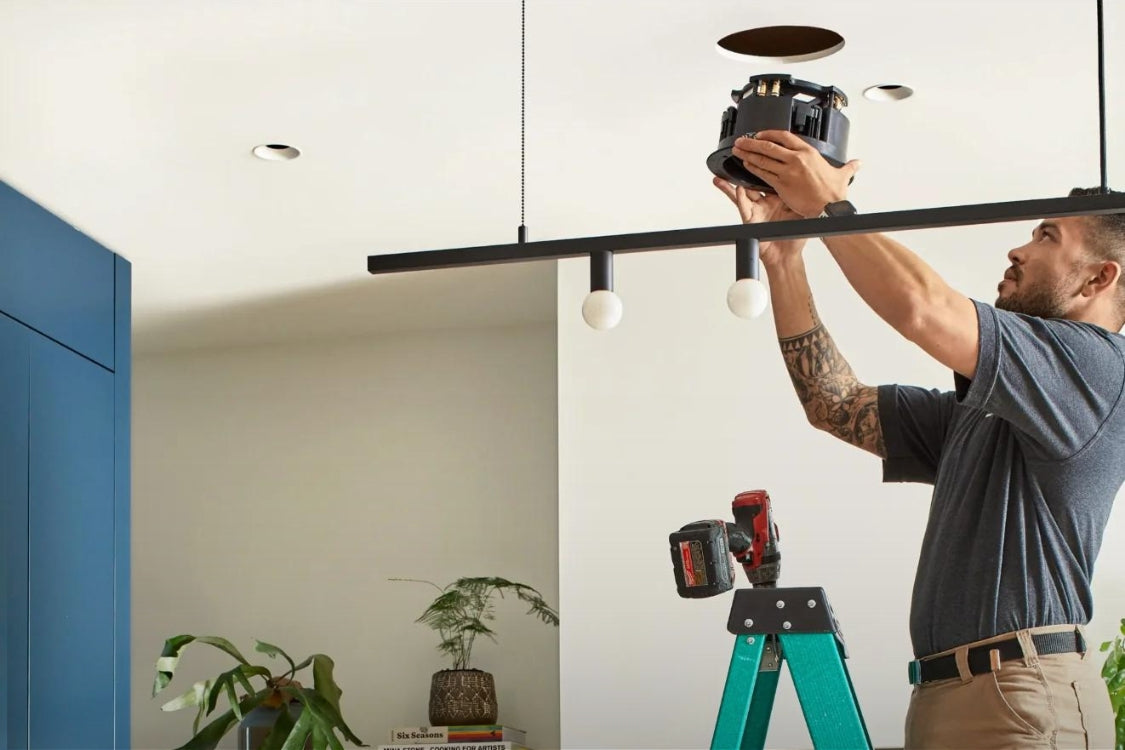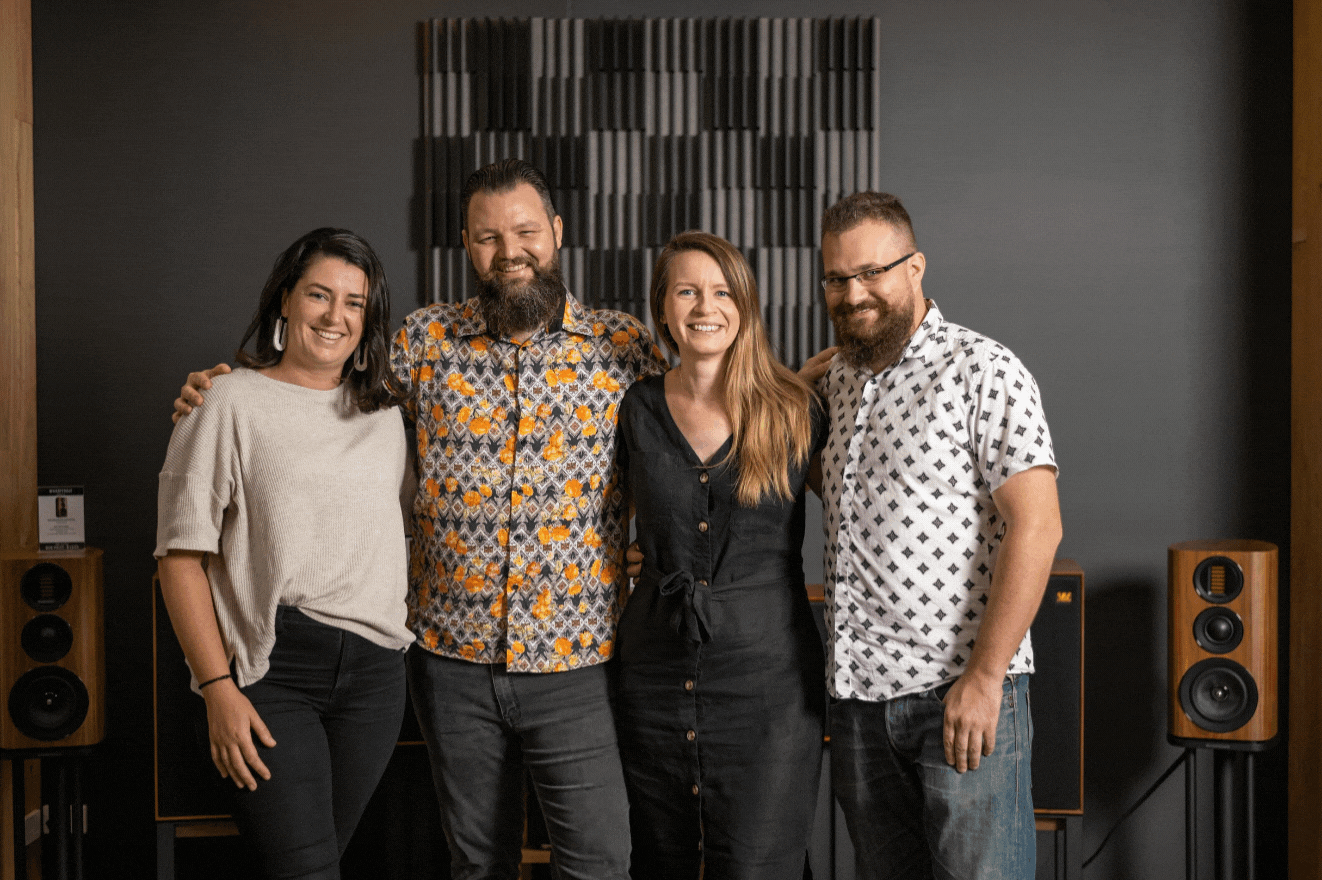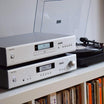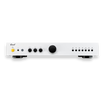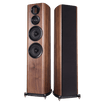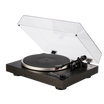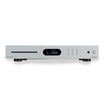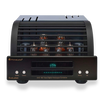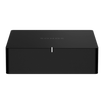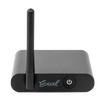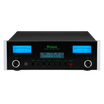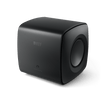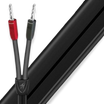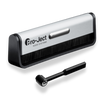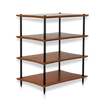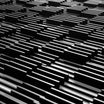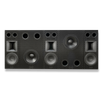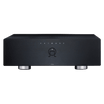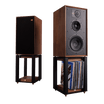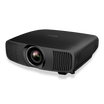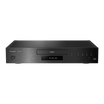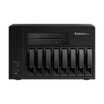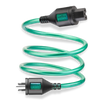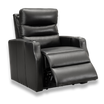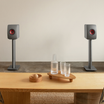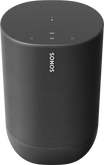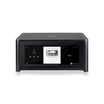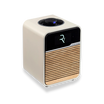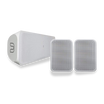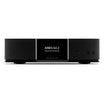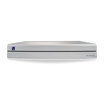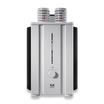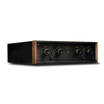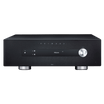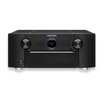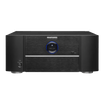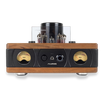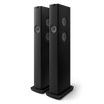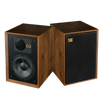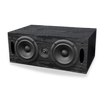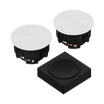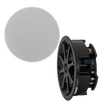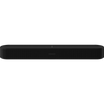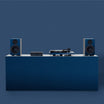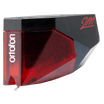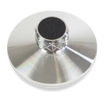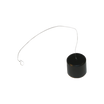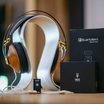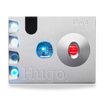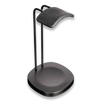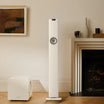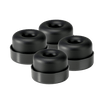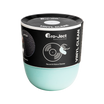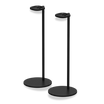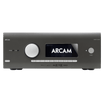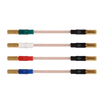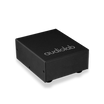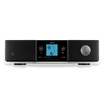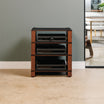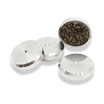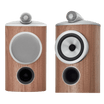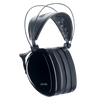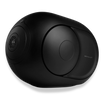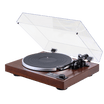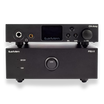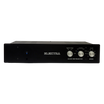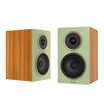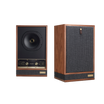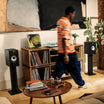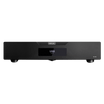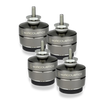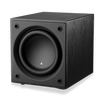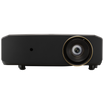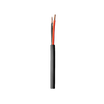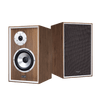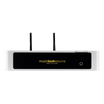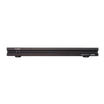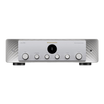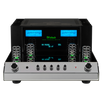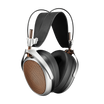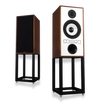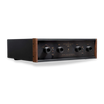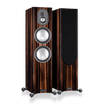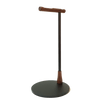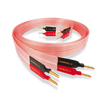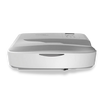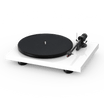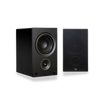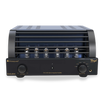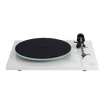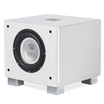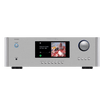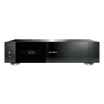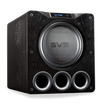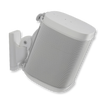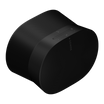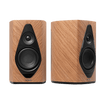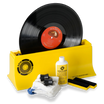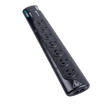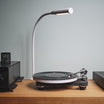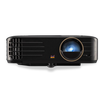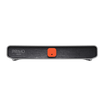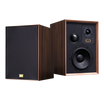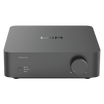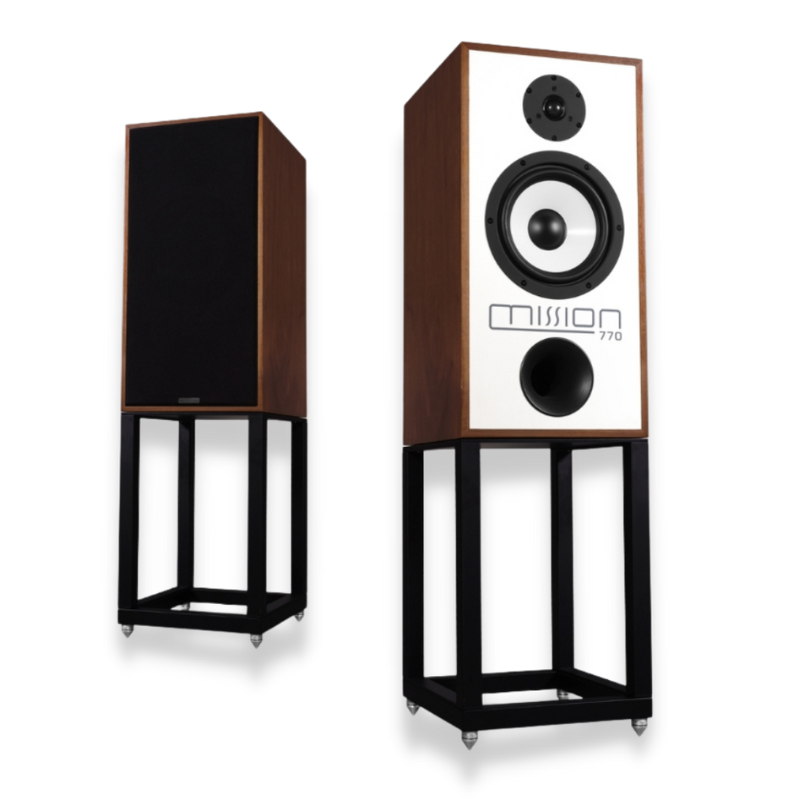
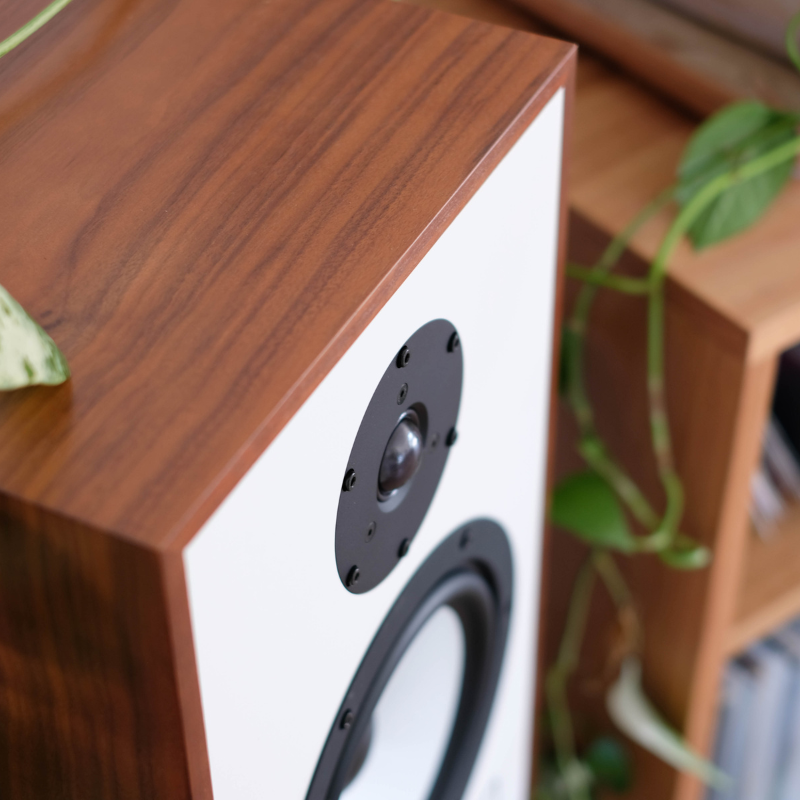
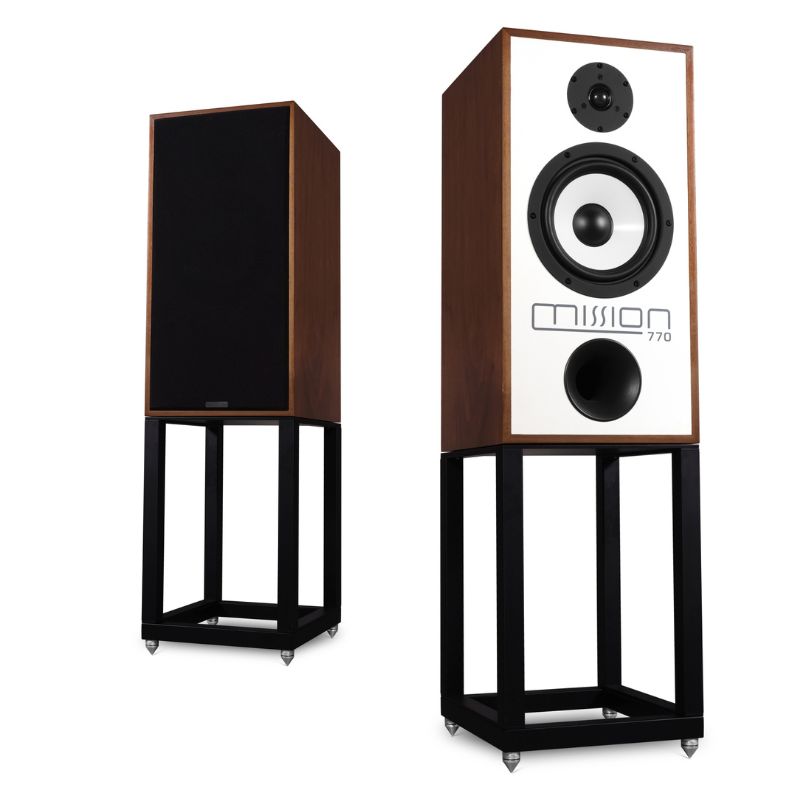
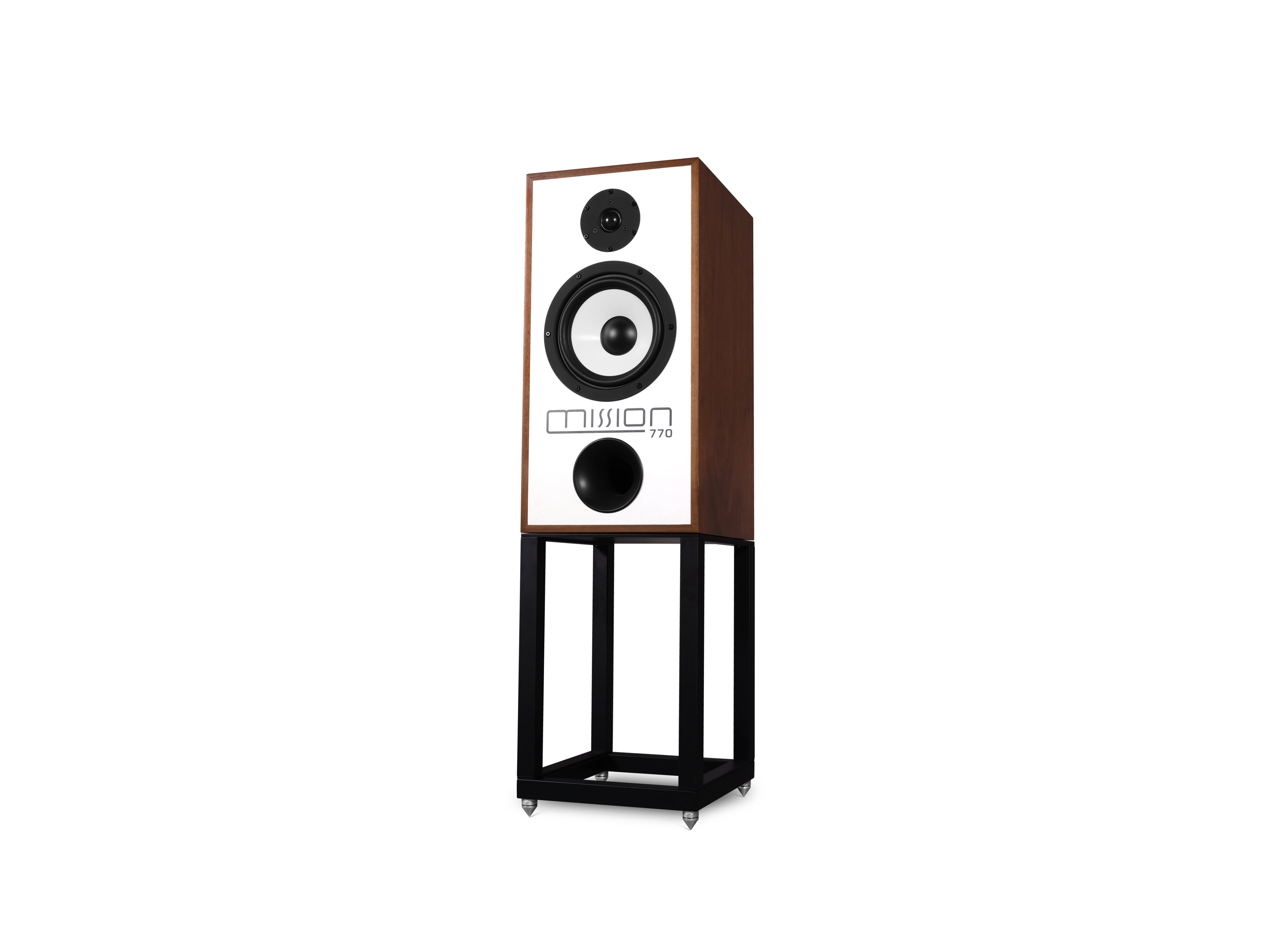
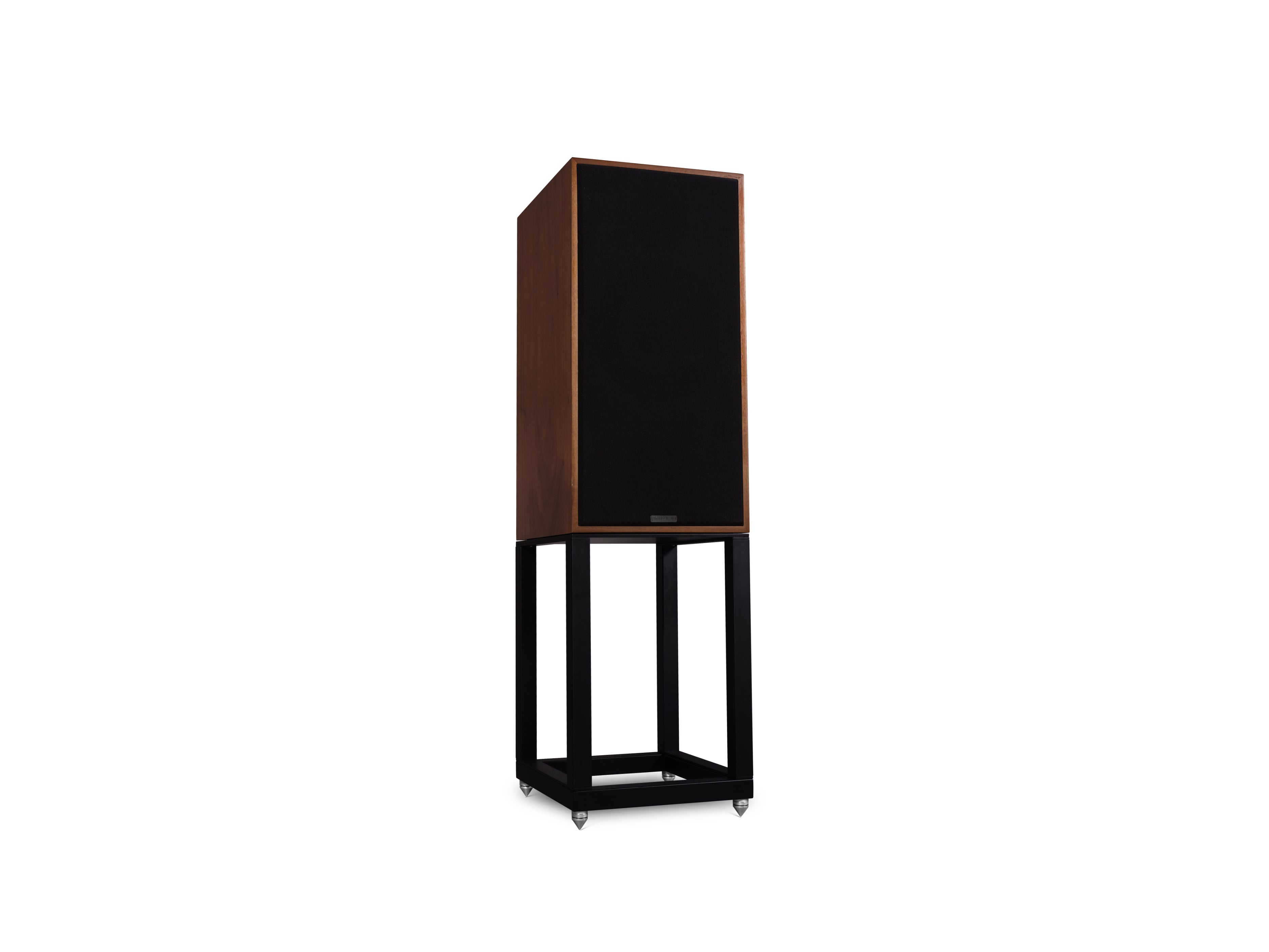
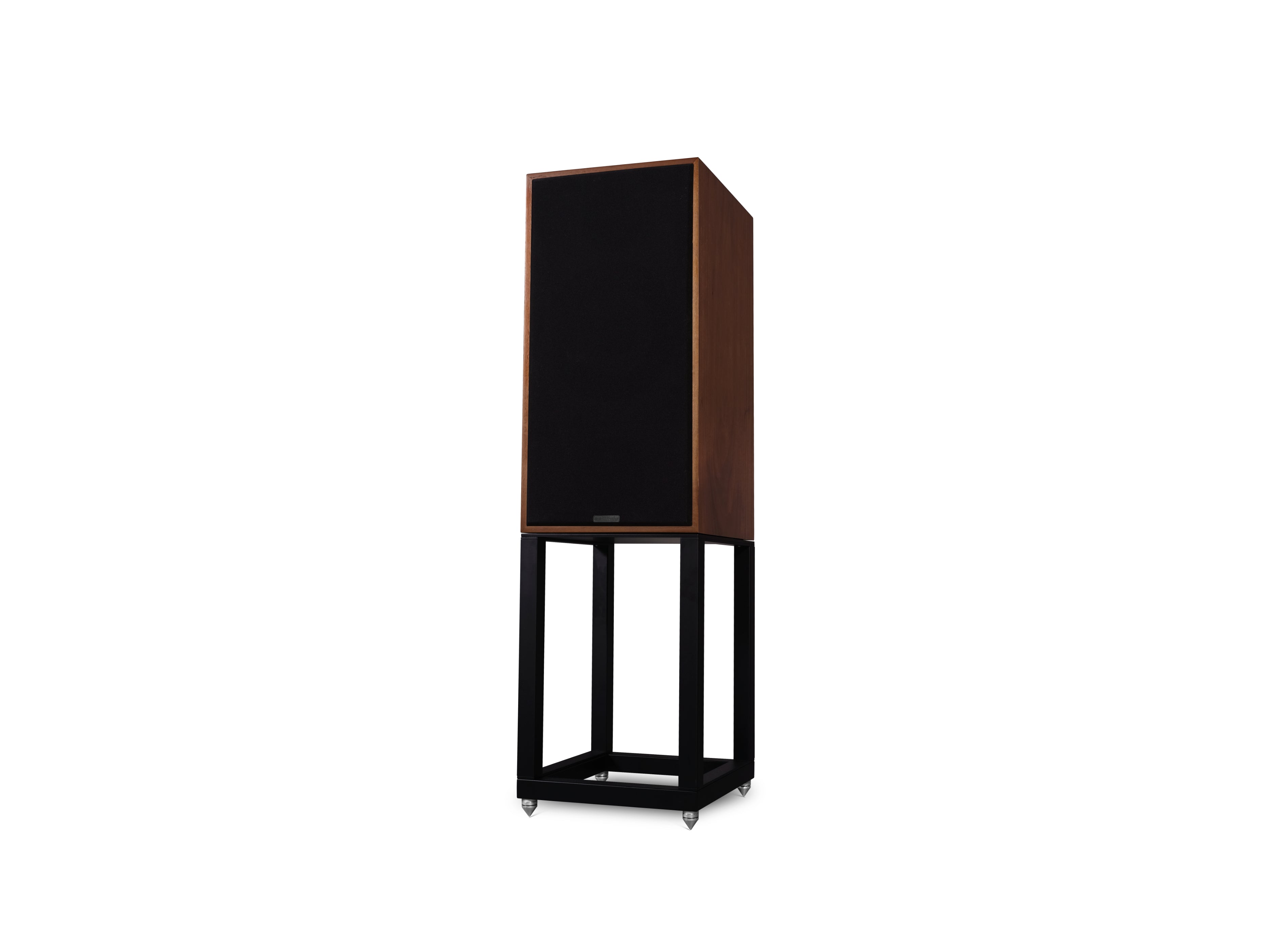
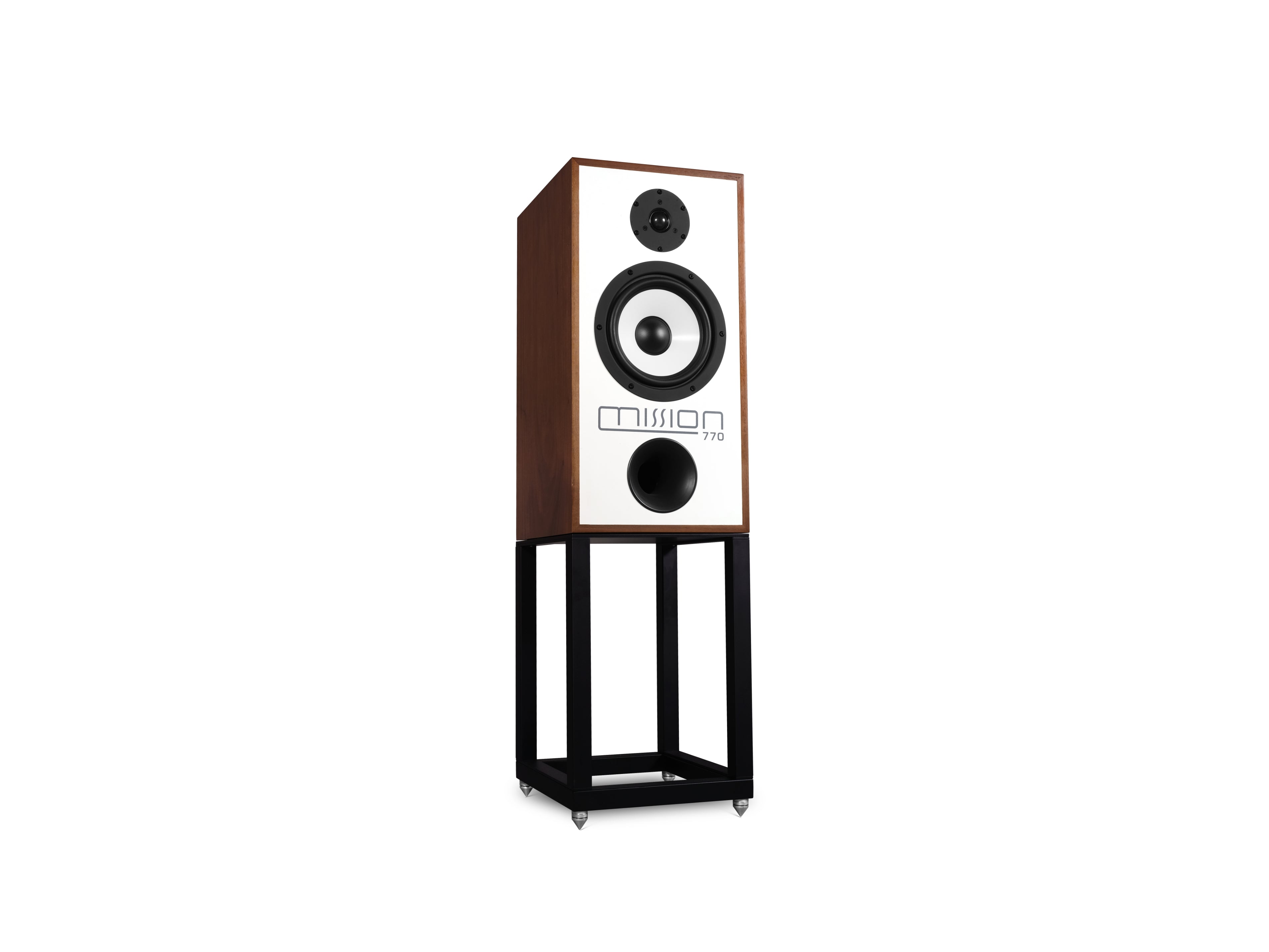

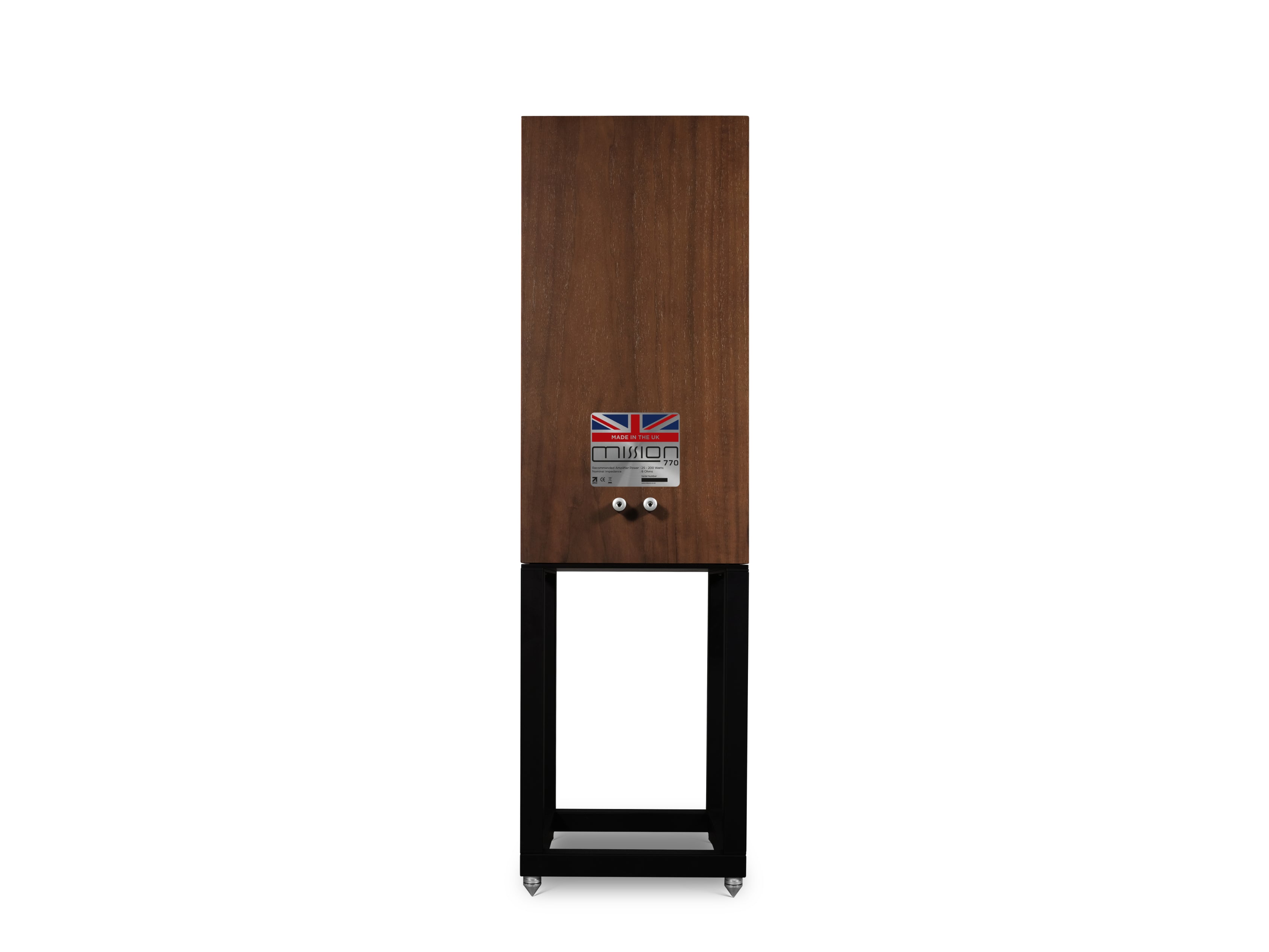
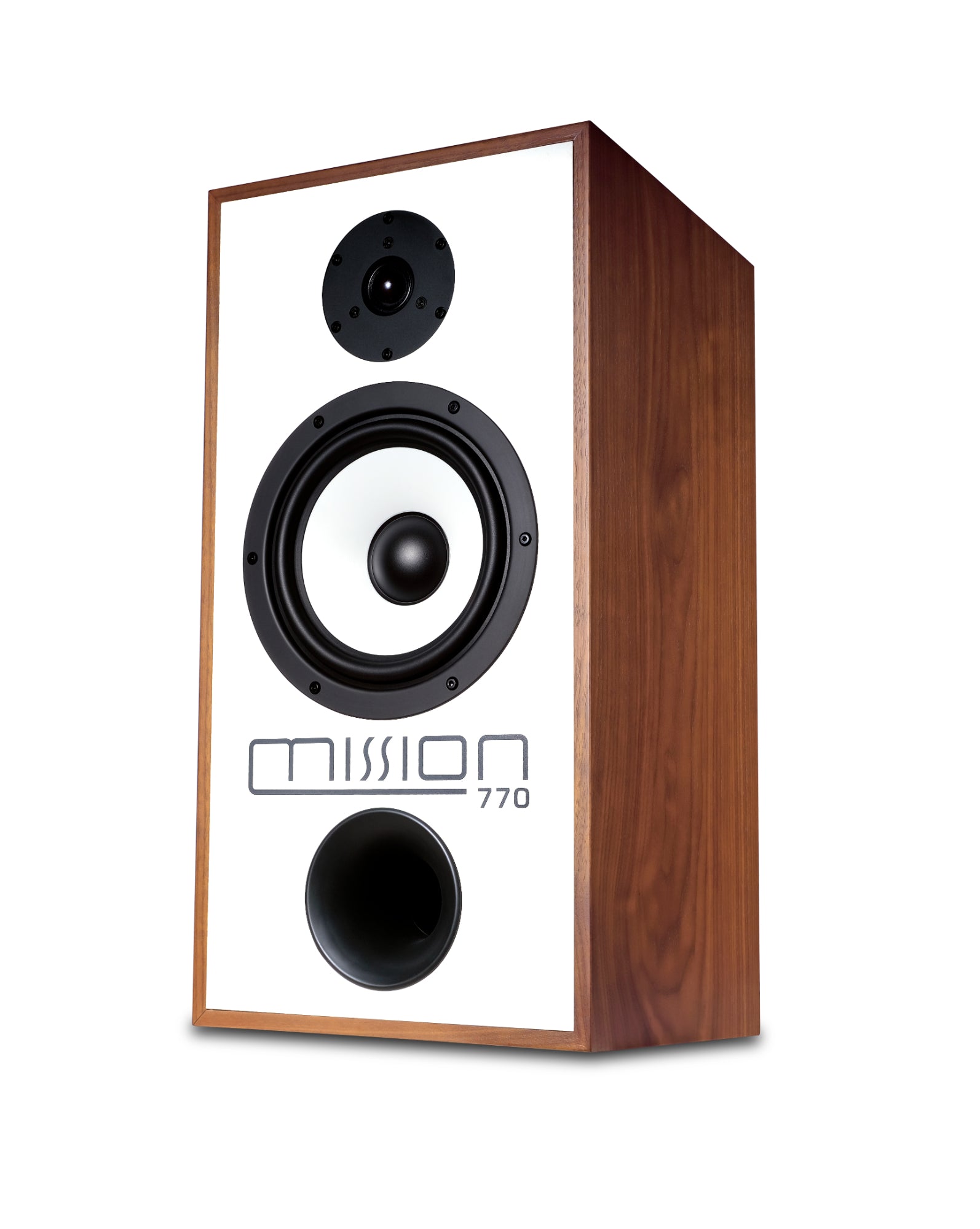

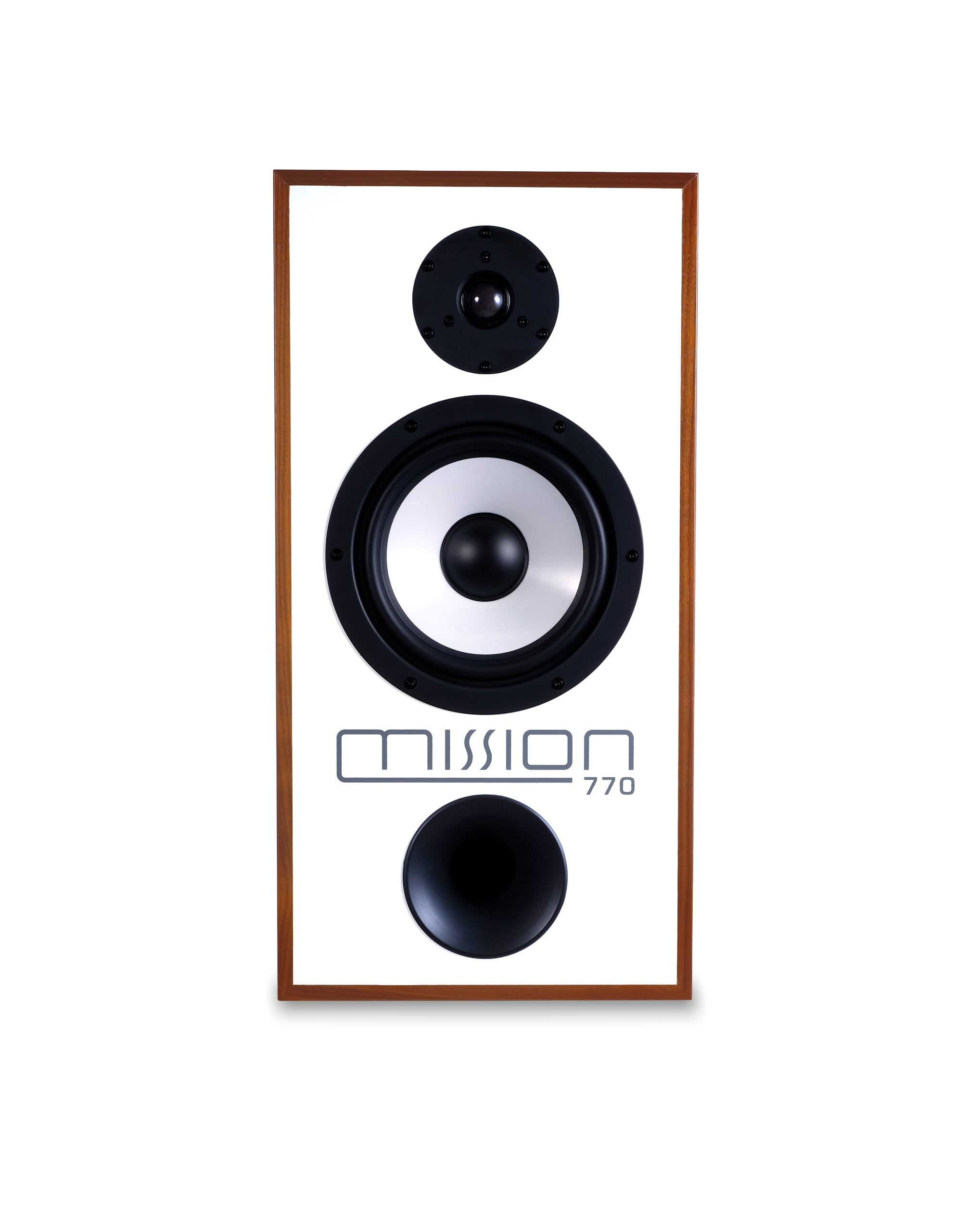
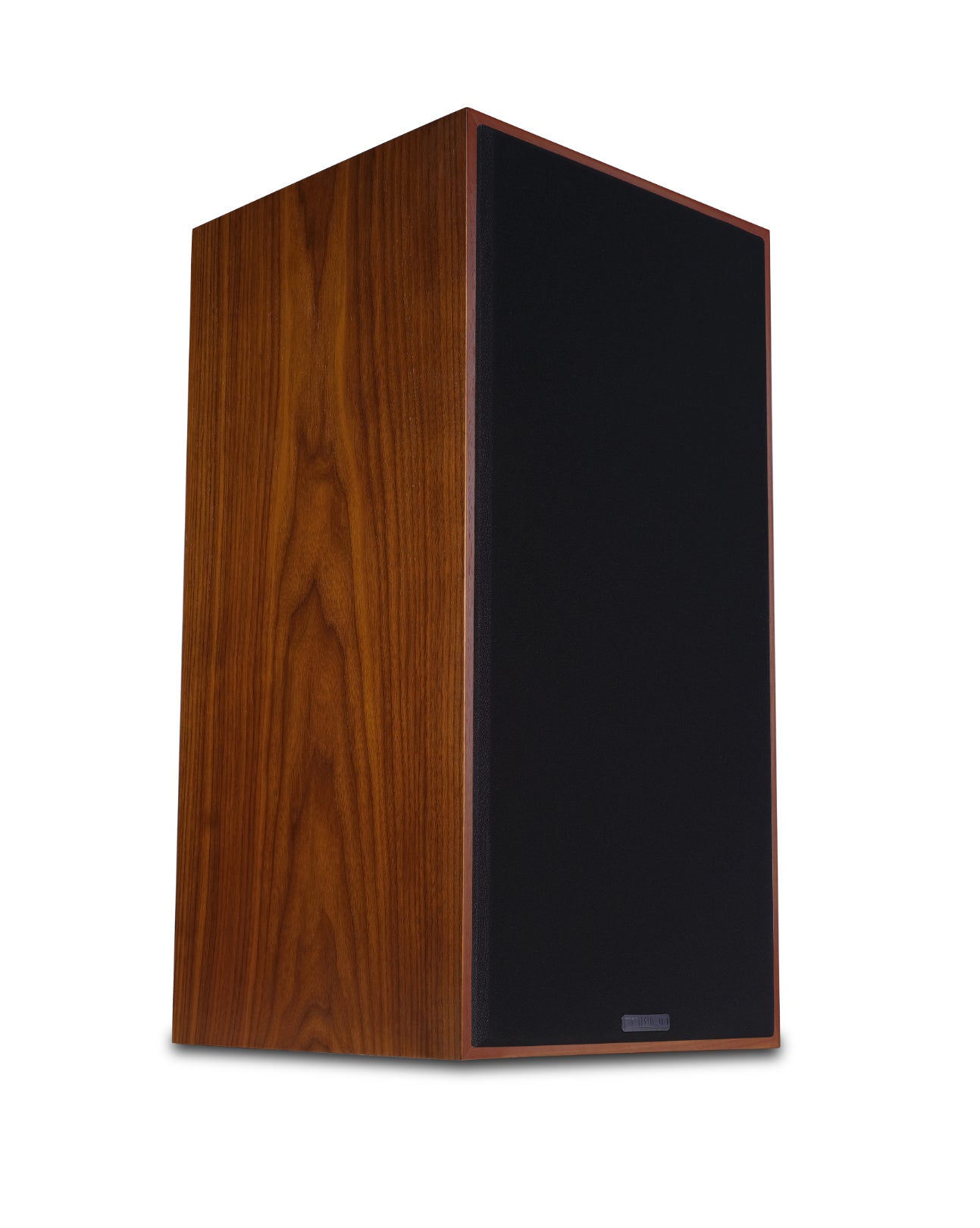
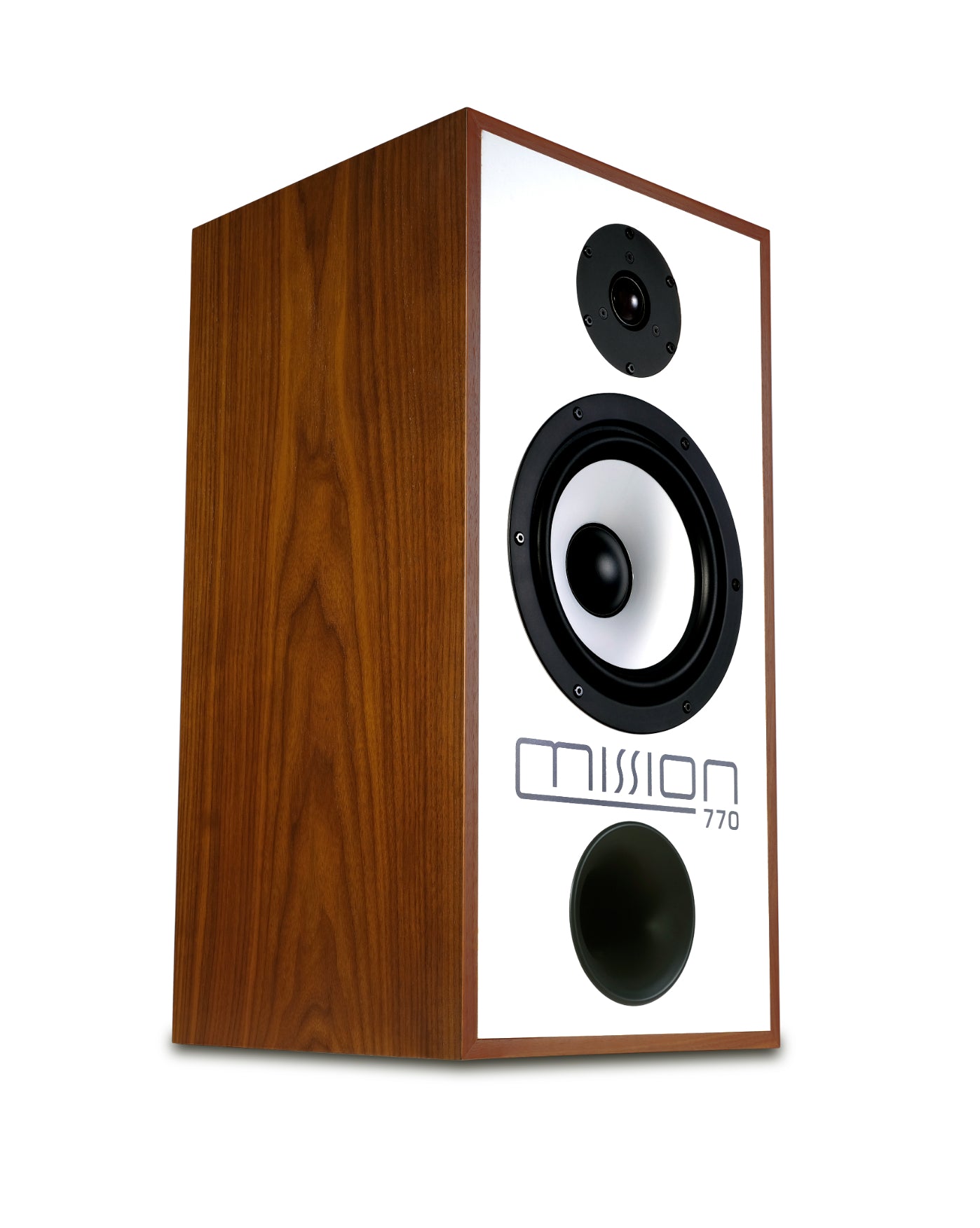
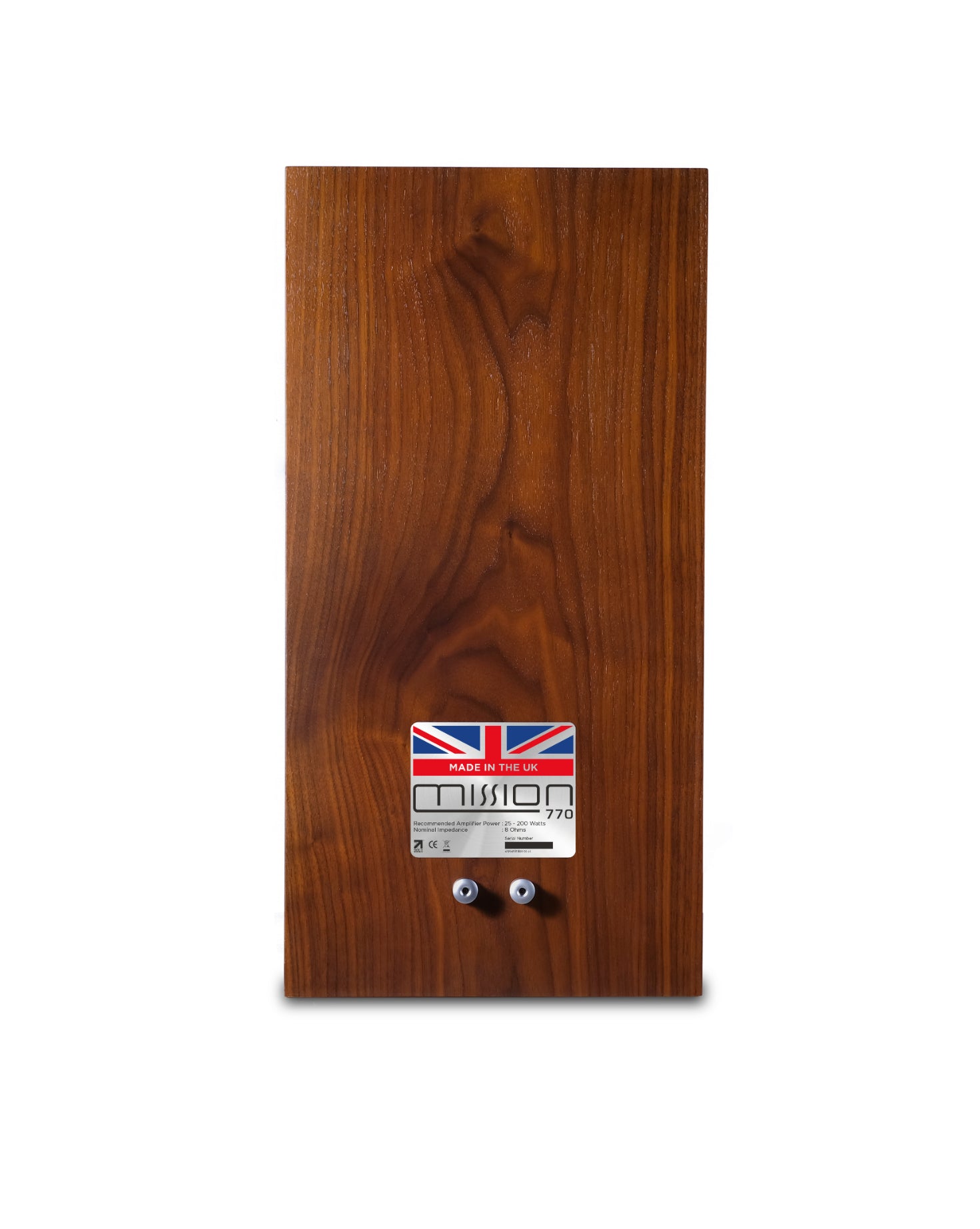
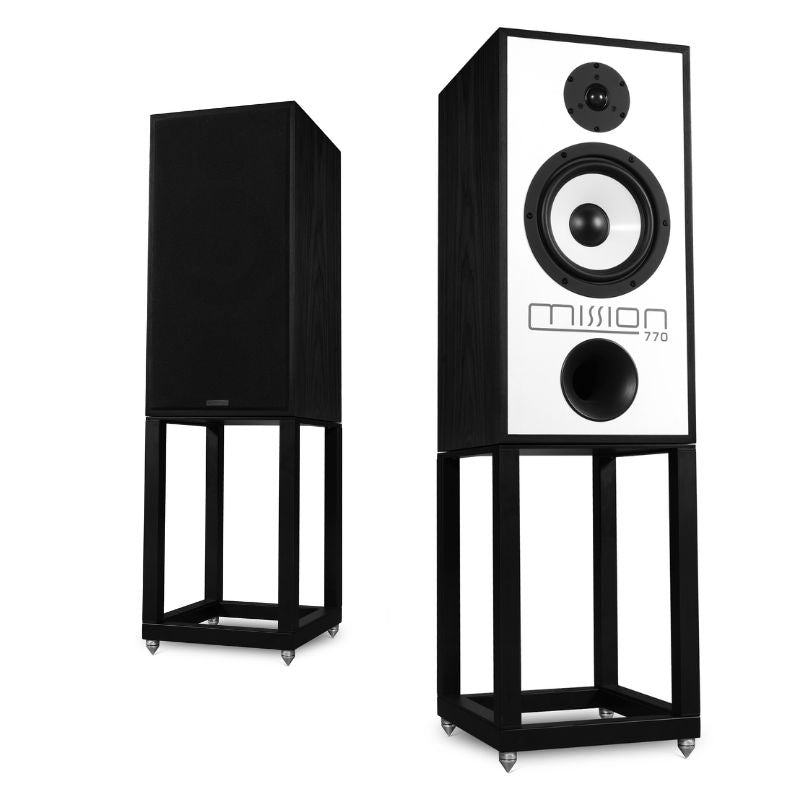
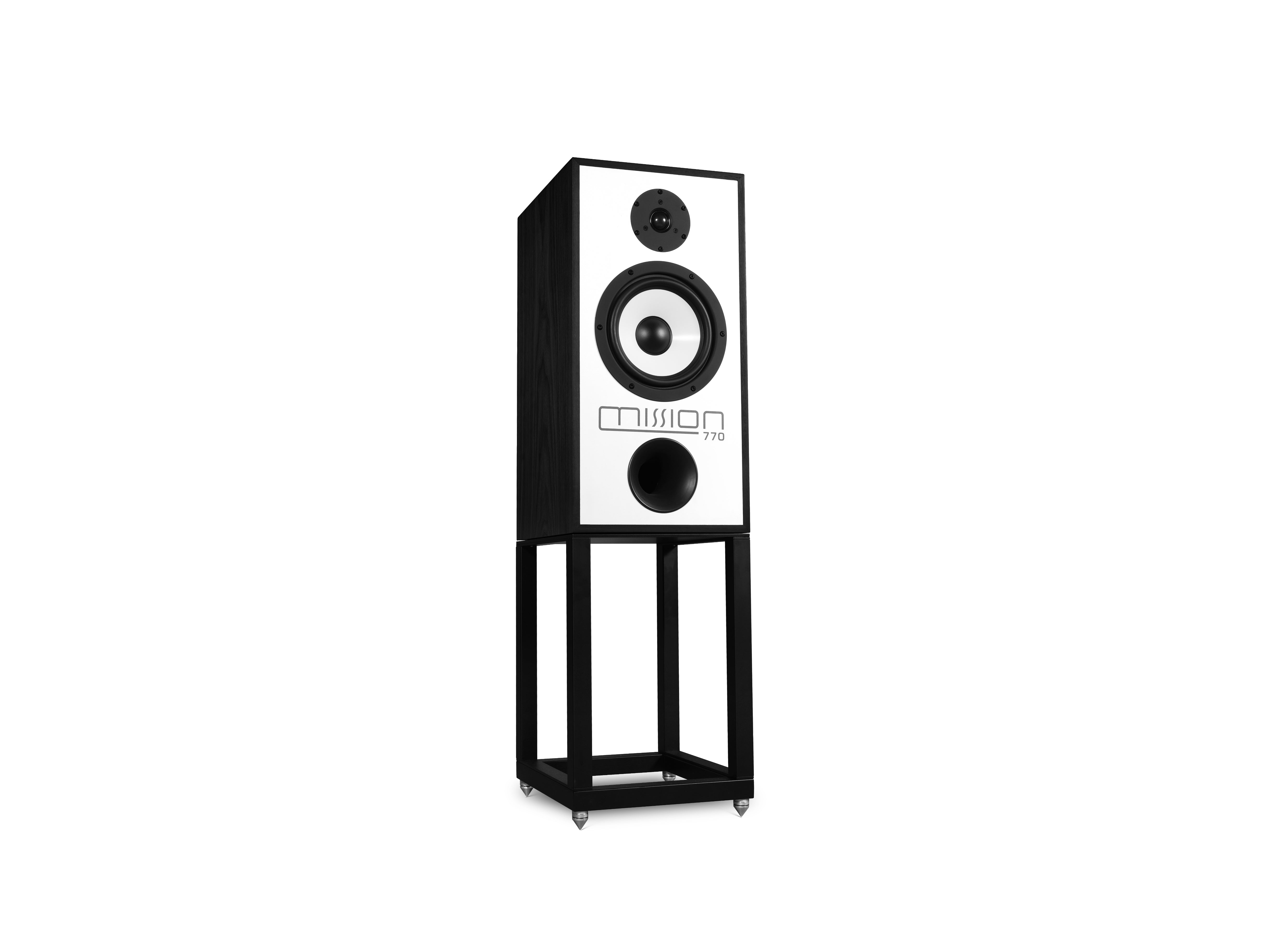
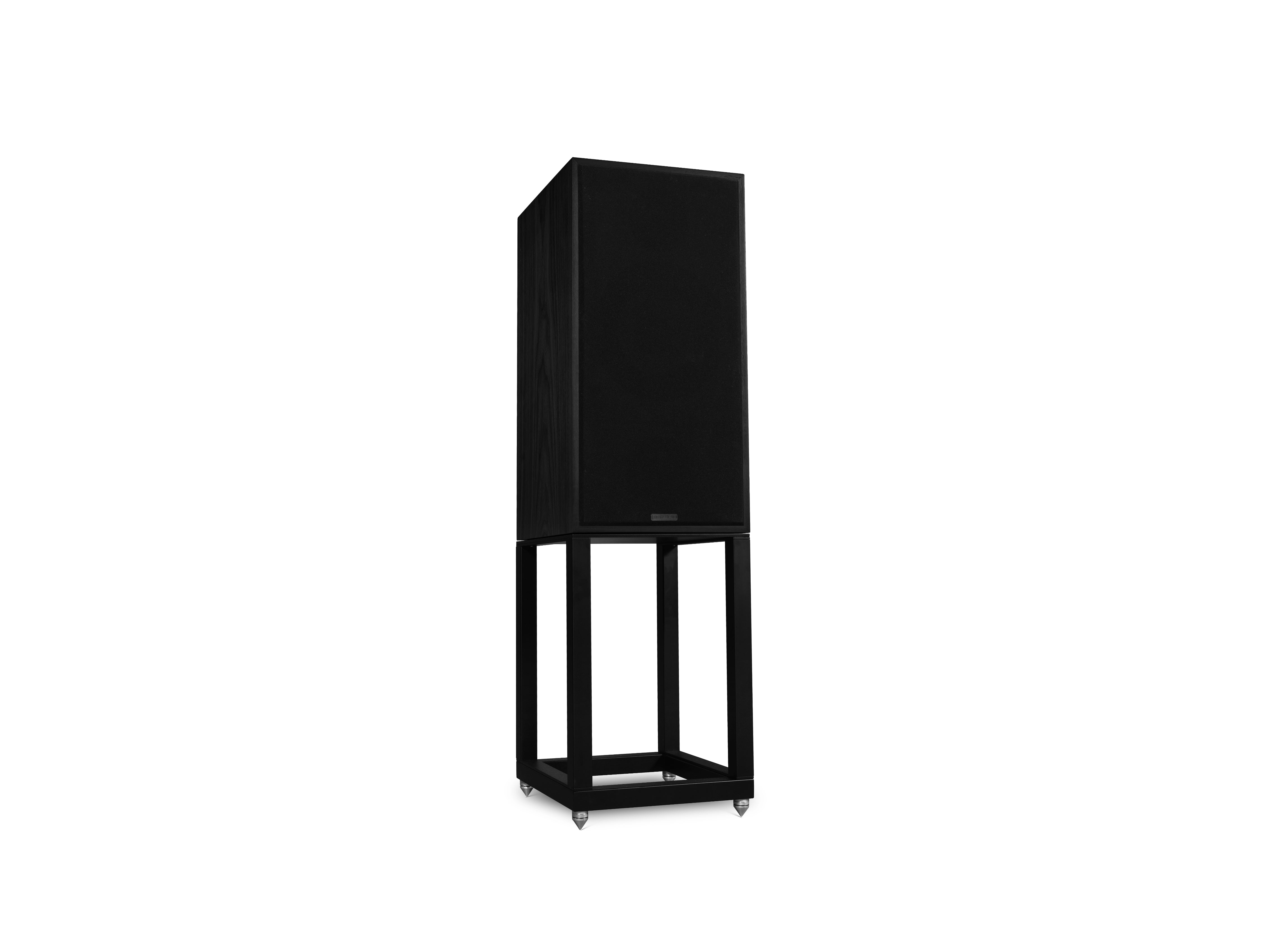
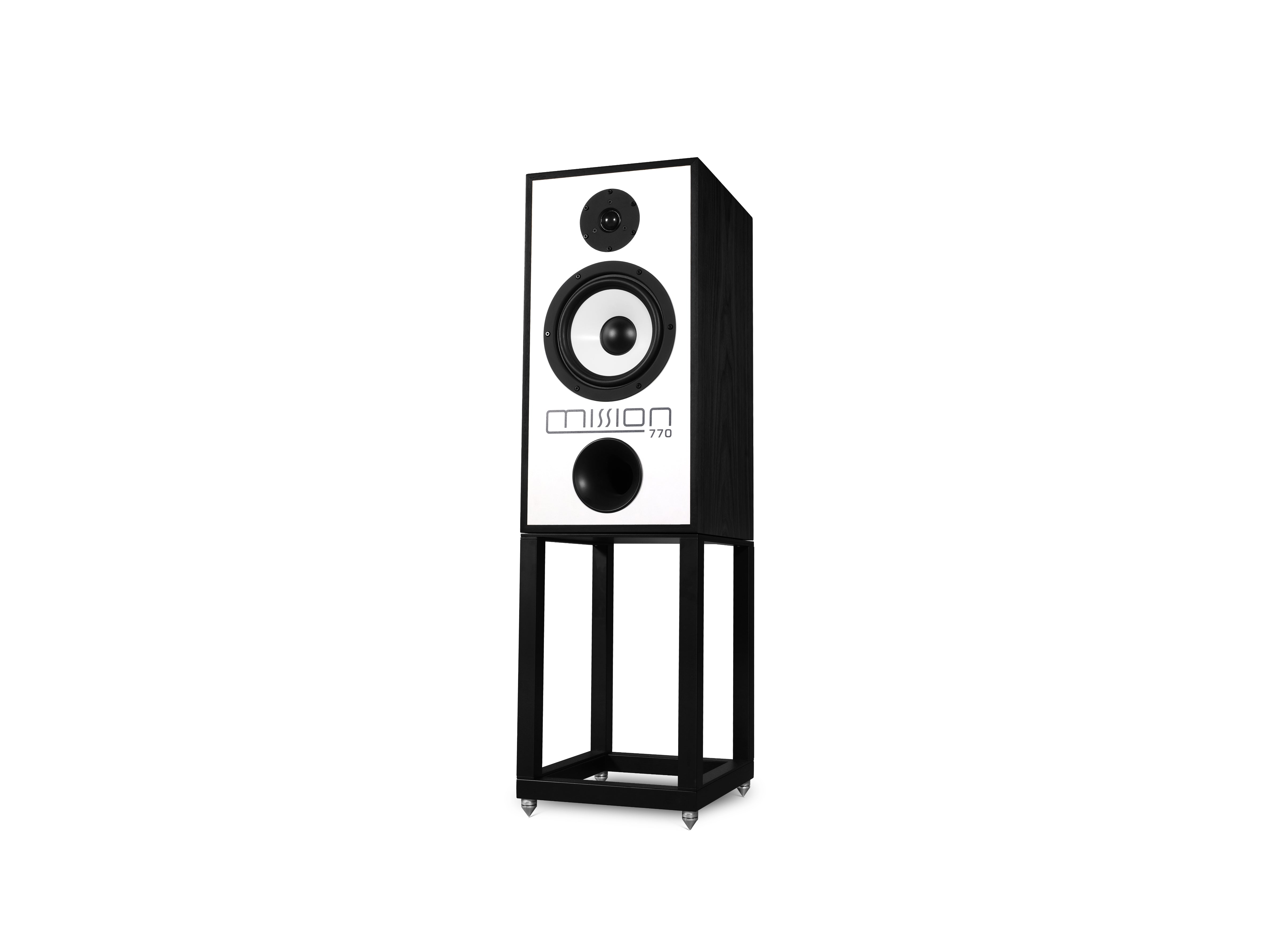
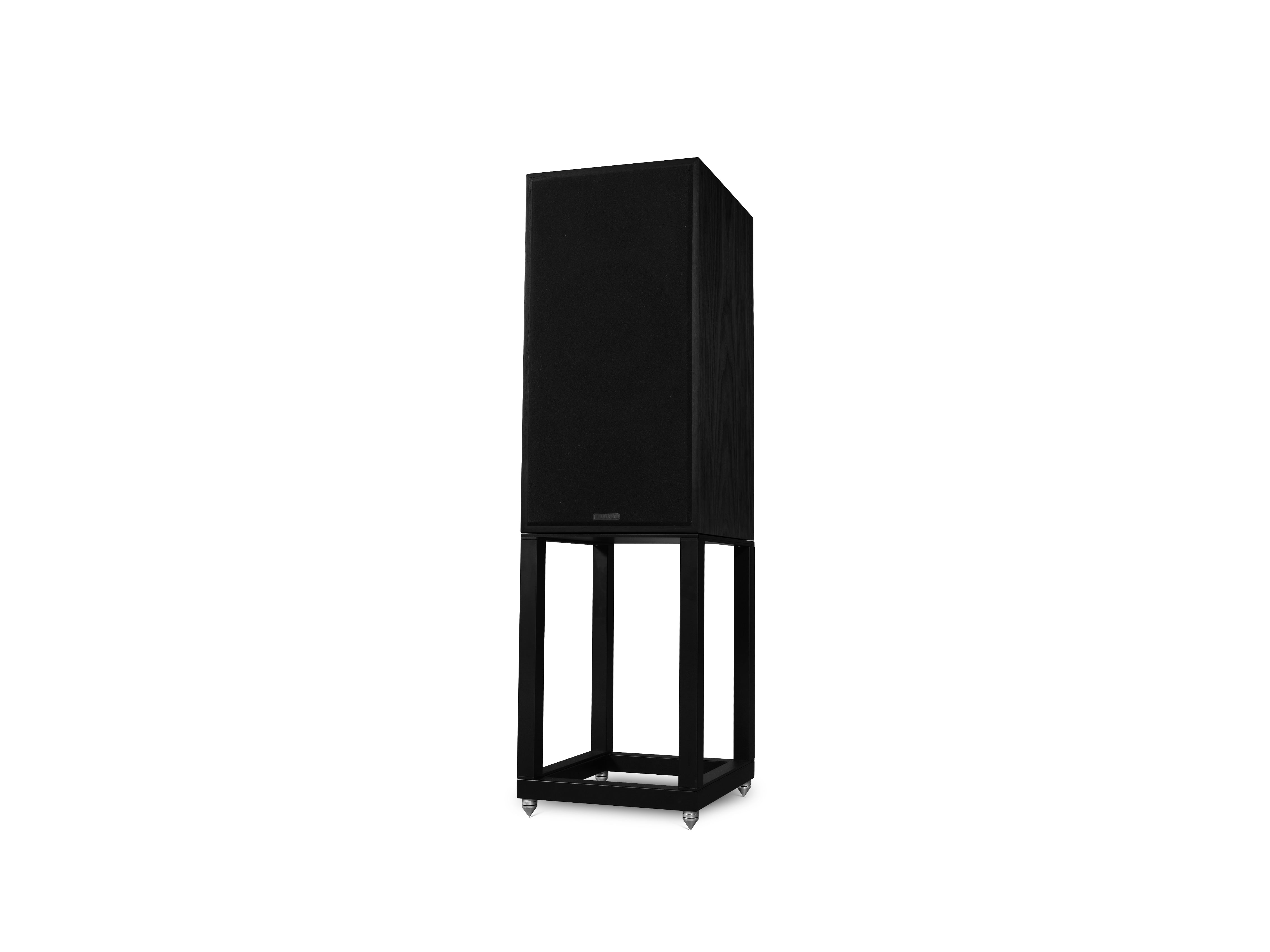
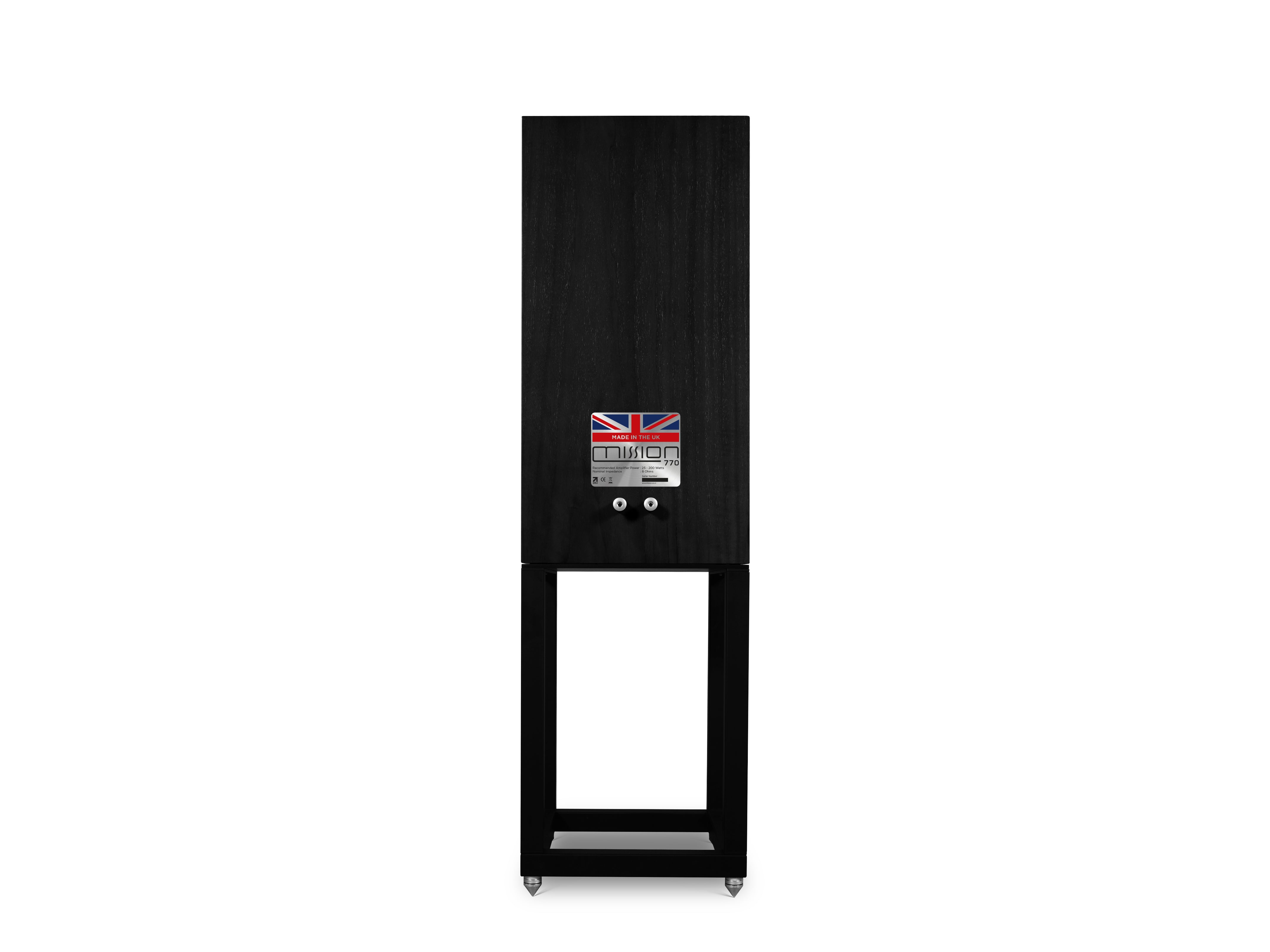
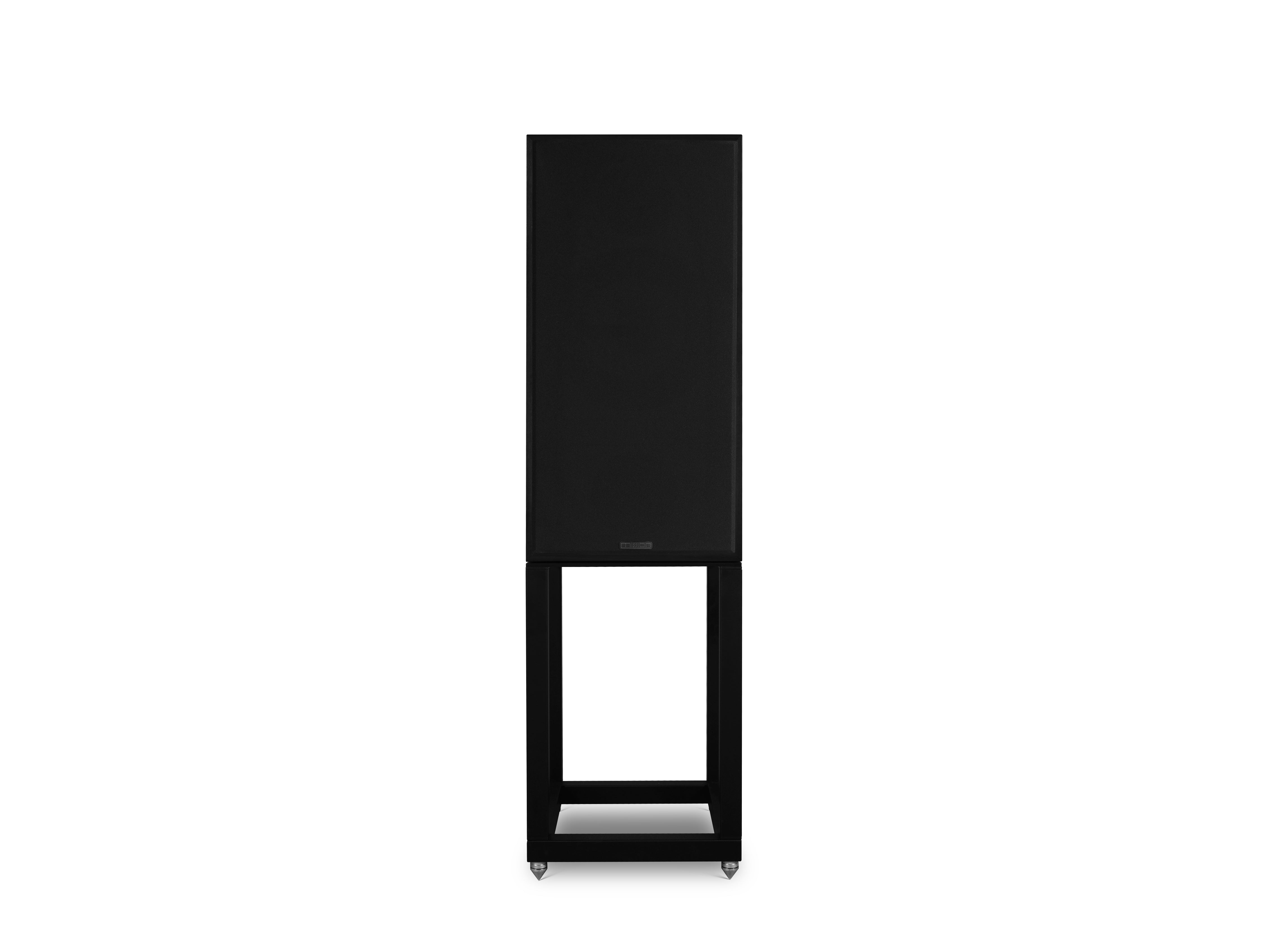
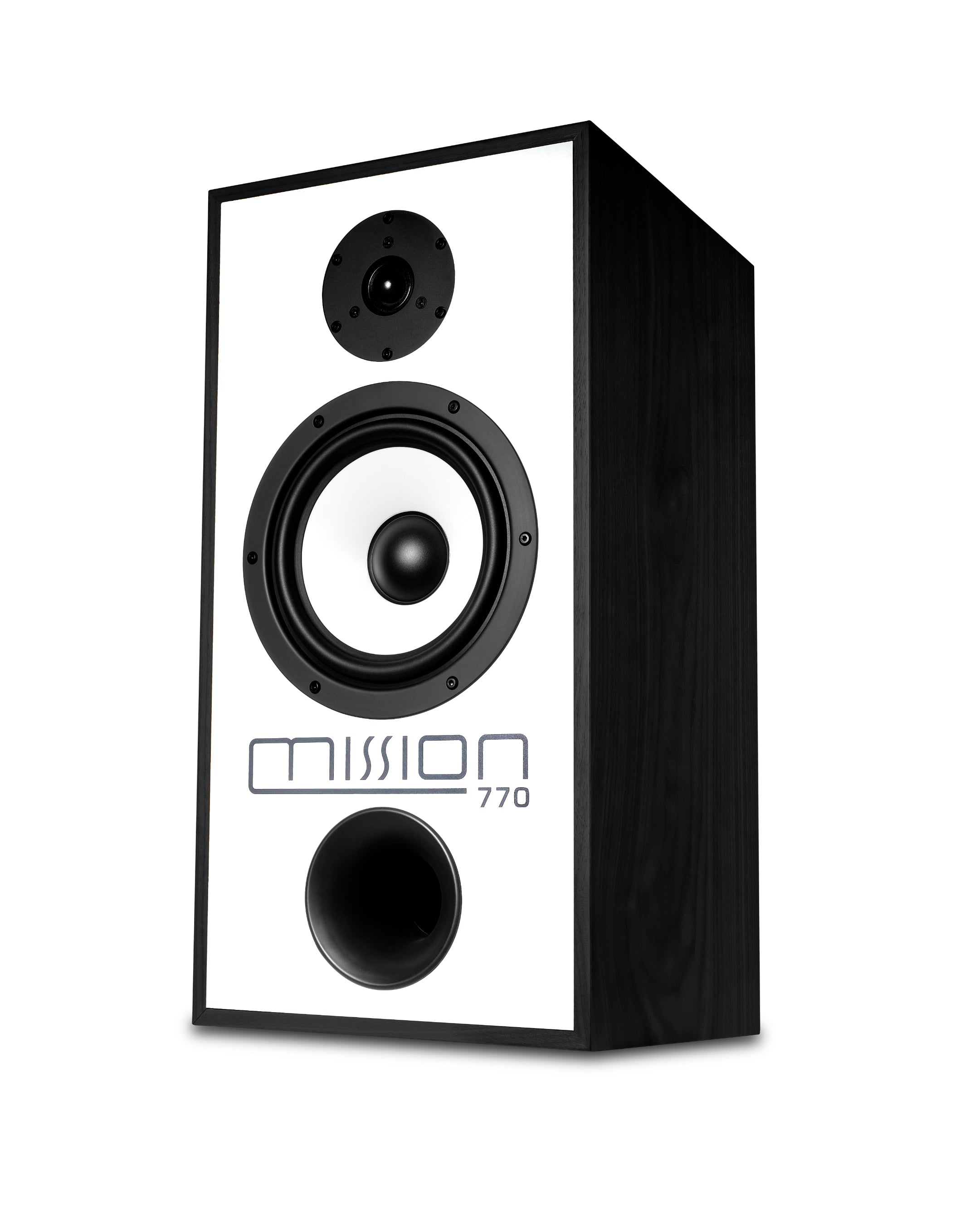
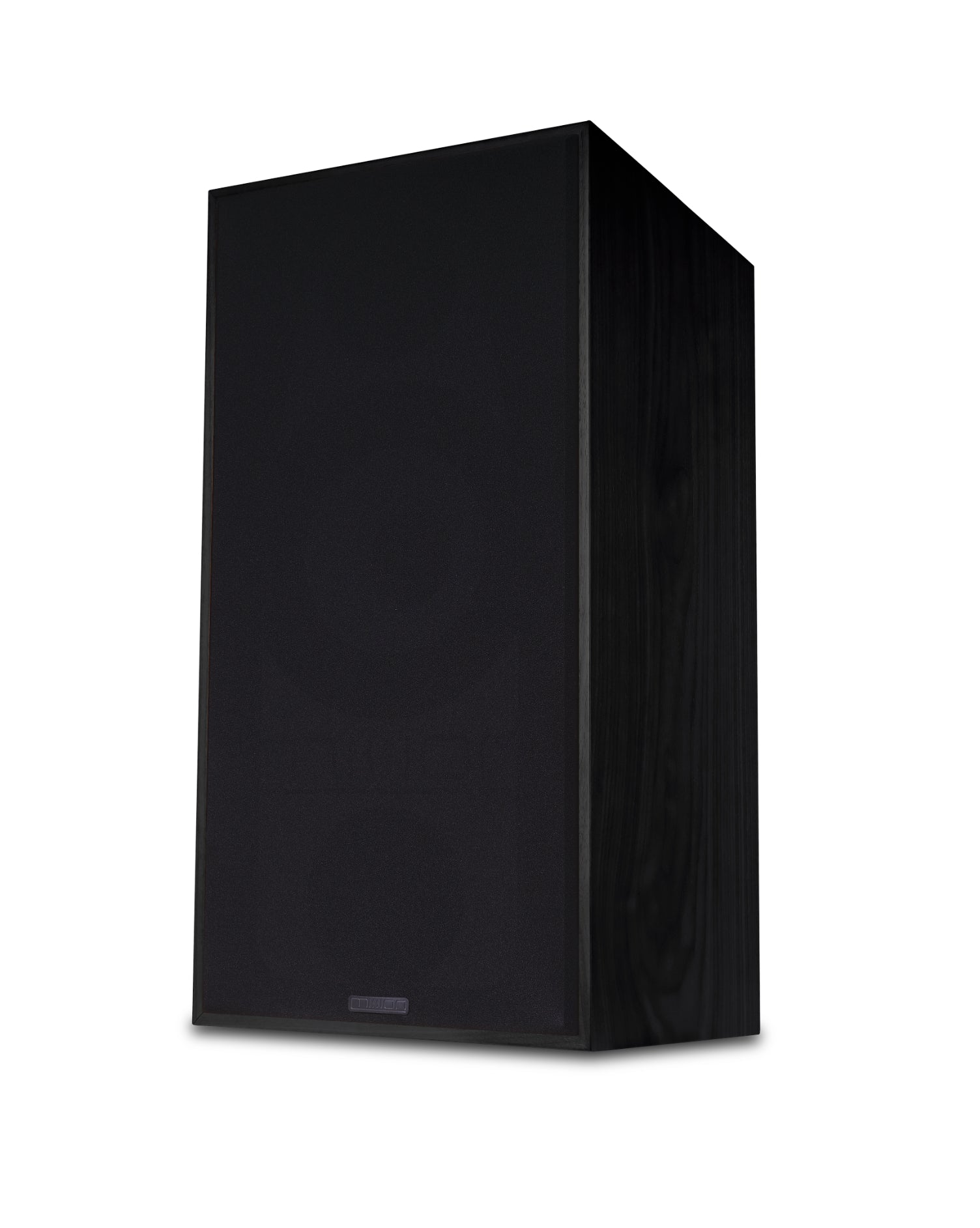
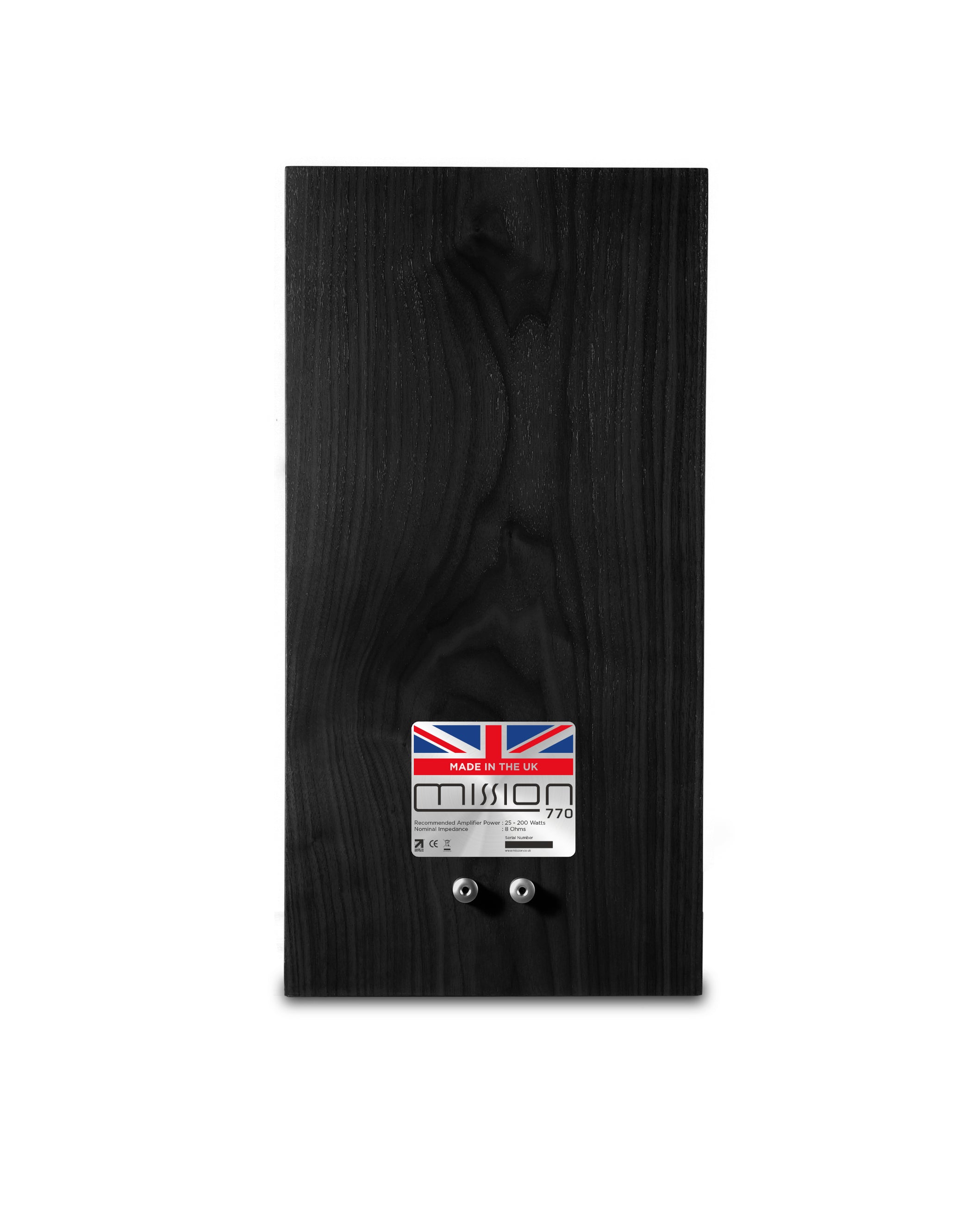
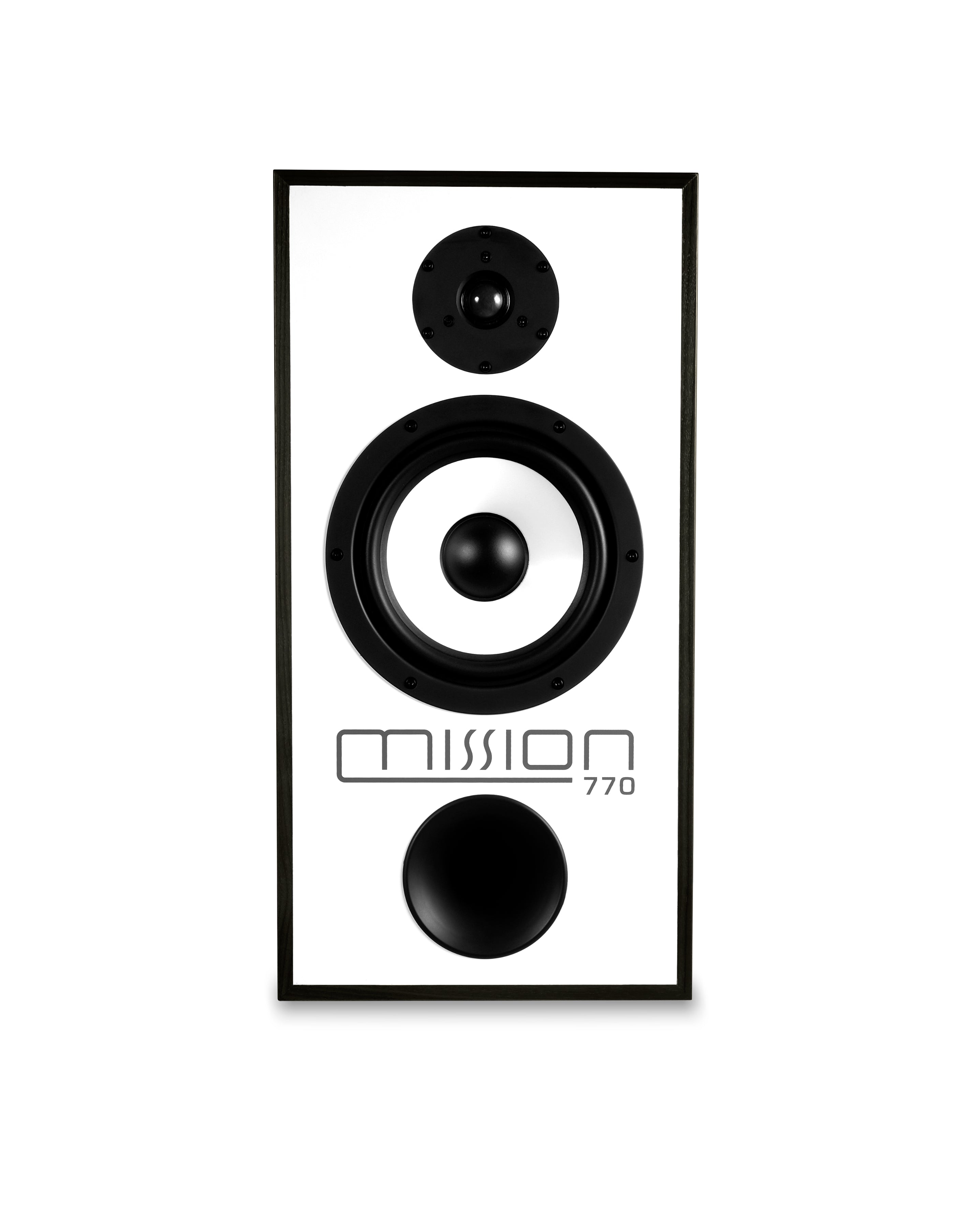
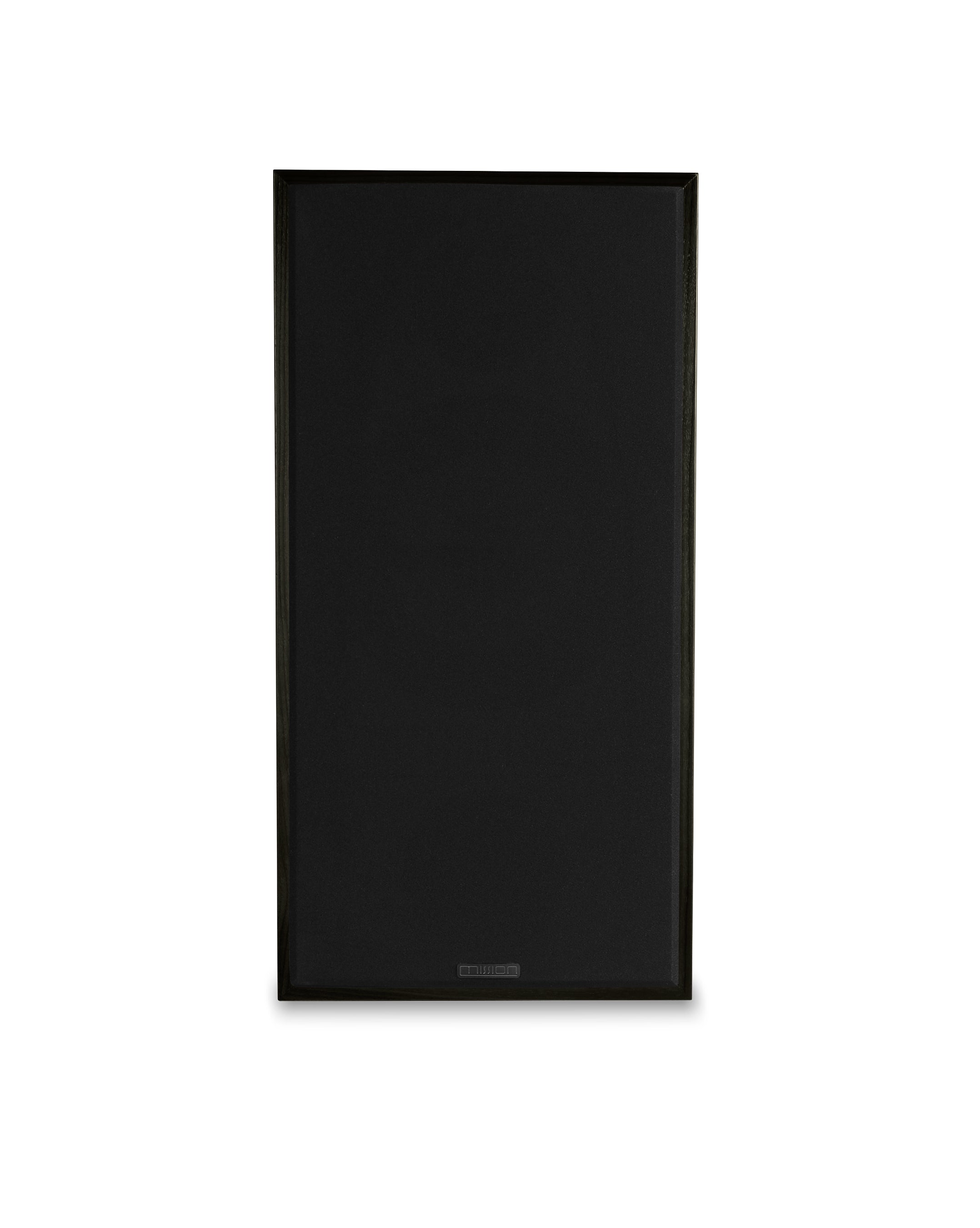
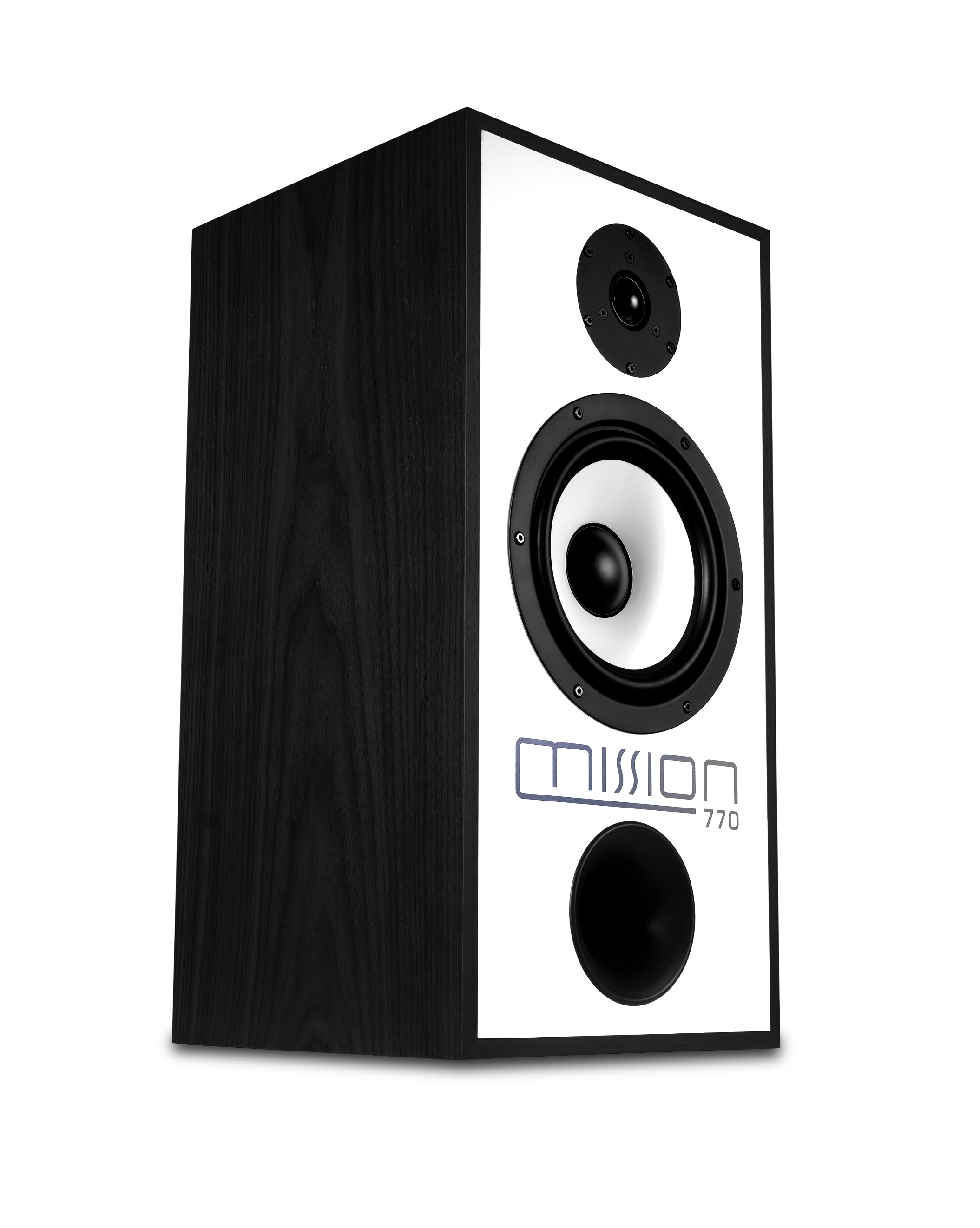

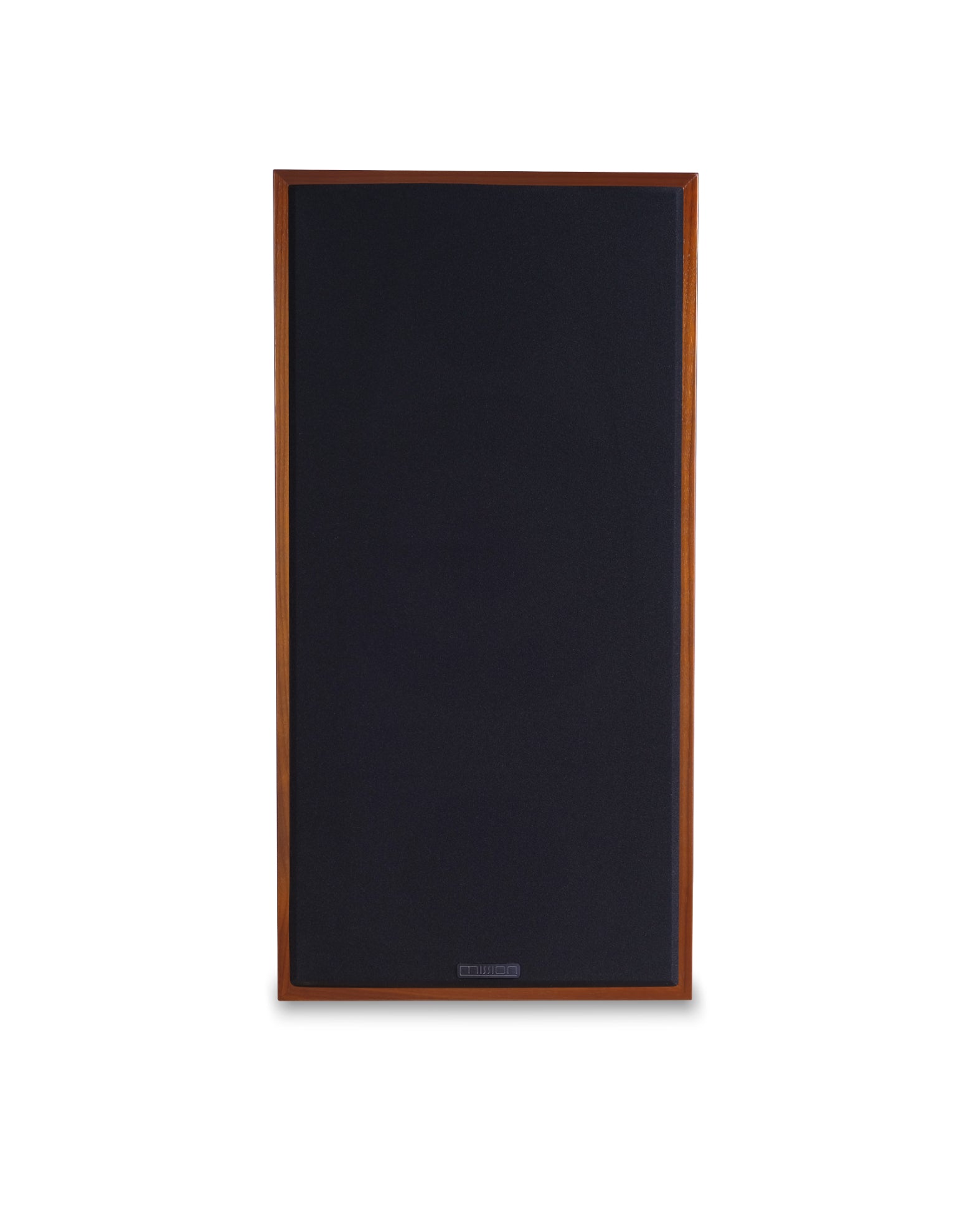
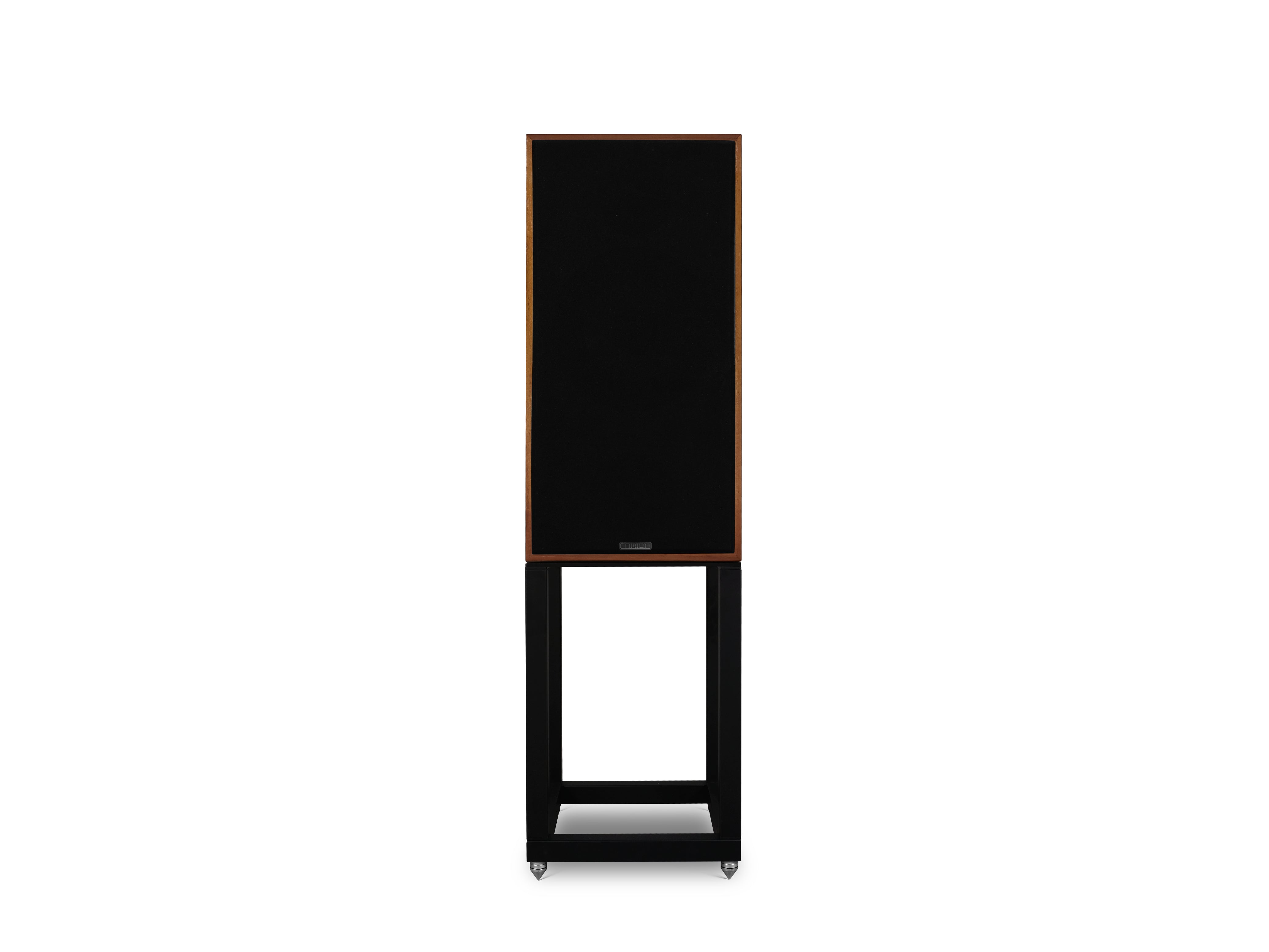
Mission 770 Standmount Speakers

These speakers have impressive authority and scale... the extended low-end helps, but it's also the 770's wide-ranging dynamics and generally articulate nature that brings the music to life. What Hi-Fi?
Specifications
| Speaker type | Two-way standmount |
| Enclosure type | Bass reflex |
| Treble driver | 28mm microfibre dome |
| Mid/bass driver | 200mm mineral-loaded polypropylene cone |
| Sensitivity (2.8V @ 1m) | 88dB |
| Nominal impedance | 8 Ohms |
| Recommended amp power | 25-200W |
| Frequency response (+/-3dB) | 42Hz-20kHz |
| Bass extension (-6dB) | 30Hz |
| Crossover frequency | 2.9kHz |
| Cabinet volume | 38.5 litres |
| Speaker dimensions (HxWxD) | 590x300x322mm (inc. cable terminals) |
| Weight (each speaker) | 19.2kg |
| Stand dimensions (HxWxD) | 445x300x300mm |
| Weight (each stand) | 17.9kg |
Warranty
Shipping & Returns
We offer free shipping on any order over $150. For full details please see our Shipping Policy.
Our returns policy lasts 30 days. If 30 days have gone by since your purchase, unfortunately, we may not be able to offer you a refund or exchange. For full details please see our Refund Policy.

Mission 770 Standmount Speakers
The Mission 770 represents one of the most iconic models in the long history of Mission loudspeakers. A model that embodied the Mission pioneering research through the late 70s and 80s, with a bloodline dating back to 1977. The original Mission 770 debuted in 1978. It quickly became Mission’s best-selling speaker, and gravitated naturally into MK2 and MK3 alterations with improvements to sensitivity and power handling. After that, the design eventually migrated to Freedom and other variations, but none of them made the sales impact or notoriety that the original 770 received.

The project’s design and engineering team was led by Peter Comeau, Mission’s current Director of Acoustic Design. Peter was a young reviewer for Hi-Fi Answers when the original 770 launched and well remembers its impact (he subsequently co-founded loudspeaker maker Heybrook in 1979). For Peter, the new Mission 770 is a labour of love; just as it was for Farad Azima all those years ago.
Gabi's thoughts:

The Mission 770 Standmount Speakers are an awesome homage to the original 1970s design. There is a distinct clarity in these speakers. You can hear that each part of the speaker is doing its job well. I'm also a big fan of the fact the stands are included in the price.
Back to the sound, you don't hear much bleed through from the trebles to the mids & bass which is amazing. While you can hear definition, there is still a great amount of cohesion in the playback. The Mission 770's bass is clean as it pushes well into the room and overall the sound is uncluttered. I loved the sound of these speakers with my Pro-Ject X2 Turntable & Hegel H120 Integrated Amplifier.
Manufacturer Details:

Key elements: the drive units
A new 20cm polypropylene mid/bass driver was developed for the re-engineered 770, mimicking the extended response and low coloration of the original, while upgrading the motor system to take account of modern power handling and dynamic requirements. Like the original, the driver is built onto a die-cast chassis with large rear ‘windows’ to reduce early reflections back through the cone. Special care has been taken to marry a low-density nitrile surround to the cone, to match its impedance and reduce reflections from the cone edge.

The new polypropylene cone is loaded with minerals to make it stiffer than the original, yielding fast, tight bass that enables the listener to hear exactly how bass instruments are being played. This is balanced by tuning the cabinet and reflex port to a very low frequency, avoiding the ‘one note bass’ that is typical of a lot of bass reflex systems. In addition, the port is strongly flared at both inlet and outlet to smooth airflow and eradicate distortion. Bass extends powerfully and cleanly to below 30Hz in room, which is remarkable for this size of speaker.

In the original 770 design, Farad Azima focused on the midrange performance, which was always the strength of hi-fi reproduction from vinyl records. For today’s digital sources and superior turntables, the performance of a speaker at the frequency extremes is now considered of equal importance to the midrange. The new 770’s treble unit uses a lightweight, damped microfibre dome with an ultra-smooth response, backed by a damped rear chamber that pushes the fundamental resonance well below the crossover region. The quality of this 28mm dome marries perfectly with the mid/bass driver to ensure evenness of character throughout the range of the whole speaker.

Key elements: the crossover
The original 770 used a single coil to equalise the bass to midrange response as well as cross over to the treble unit, the latter driven by a resistor, capacitor and coil combination. Using just these components to perform both functions was always going to be a compromise, and this is likely the reason why Farad Azima could not resist tinkering with the crossover and producing so many variants.
Today’s advanced software crossover mapping and measuring techniques allow Mission to perfect the balance between bass and midrange and adjust the crossover to the treble unit by mapping the acoustic crossover slopes with extreme accuracy. Even so, the choice of EQ and crossover for the new 770 involved hundreds of hours of listening sessions using a wide variety of music, and over 170 circuit iterations were tried before the final crossover was settled upon.
The circuit was then mapped out onto separate bass and treble PCBs using very short signal paths and accommodating high-quality components such as super-transparent polypropylene capacitors and air core inductors, maintaining the simplicity and elegance of the original whilst improving critical elements. The resulting transparency to musical detail ensures the thrilling emotion of music is fully conveyed, whilst maintaining a seamless transition between the mid/bass and treble units.

Key elements: the cabinet
The drivers and crossover are housed in a real-wood veneered cabinet, measuring 59x30x30cm (HxWxD), with a white laminated front baffle echoing the style that made the Mission 770 a stand-out hi-fi product in the 1970s and ’80s. Beneath the rich, rosy-tinged walnut or black veneers lies a further technological advancement. While the original 770 reduced midrange coloration using the BBC-influenced technique of a thin-wall cabinet damped by mass loading with bitumen pads, the new 770 features a twin-wall sandwich of high-density MDF and particle board bonded by a layer of high-damping adhesive. This results in a cabinet with panel resonance well below audibility, allowing the drive units to do their job unsullied by cabinet coloration at all frequencies.
Internal bracing adds strength to the front baffle and braces the drive unit to the cabinet, creating a mechanical support that aids the dynamic performance of the bass unit and reveals the micro-dynamics of the musical performance. This is complemented by a layer of acoustic foam and damping fibre, strategically placed to absorb reflections inside the cabinet without overdamping the bass quality.
Peter Comeau is justly proud of what he and Mission’s acoustic engineering team have achieved. Speaking about the launch, Peter said: “To repeat the original 770 brochure’s claims of ‘staggering bass definition and response; lack of coloration; uncanny imaging; information retrieval; transient attack; depth and perspective; accuracy and linearity; speed and dynamic range’ is only to hint at the true capabilities of the new 770. Instead, we prefer to focus on its uncanny ability to reveal the true depth, emotion and drama of whatever music you care to feed to it. A much-loved British hi-fi classic has been emphatically reborn.”

Made in the UK
The new Mission 770 is not only designed and engineered in the UK; it is made there too. Mission’s parent company, IAG, has expanded its facilities in Huntingdon, Cambridgeshire – the traditional home of Mission – to incorporate key manufacturing, assembly and finishing processes for specially selected products, in addition to the R&D function already located here. A 9,000ft2 production facility has been added to the existing building in Huntingdon, including a new anechoic chamber, making a total of 25,000ft2 of office, lab and manufacturing space.
Like most British audio brands, especially those operating at the more affordable price points, manufacturing of Mission speakers was moved to Asia (to IAG’s purpose-built factory) many years ago – essential in order to maintain retail prices at the level the market demanded – while design functions such as R&D and industrial design remained in the Huntingdon. IAG’s new Made in the UK initiative has been devised to enable the manufacture of specific products to be brought back to the UK without skyrocketing costs. ‘Heritage’ products are the focus of this initiative – speakers that are steeped in British audio history, where ‘Made in the UK’ adds to the sense of historical authenticity. The new Mission 770 is the first to benefit; products from other brands within the Group, including Wharfedale, Leak and Castle, are set to follow.
These speakers have impressive authority and scale... the extended low-end helps, but it's also the 770's wide-ranging dynamics and generally articulate nature that brings the music to life.

This product has no reviews yet.
WHILE YOU ARE BROWSING

